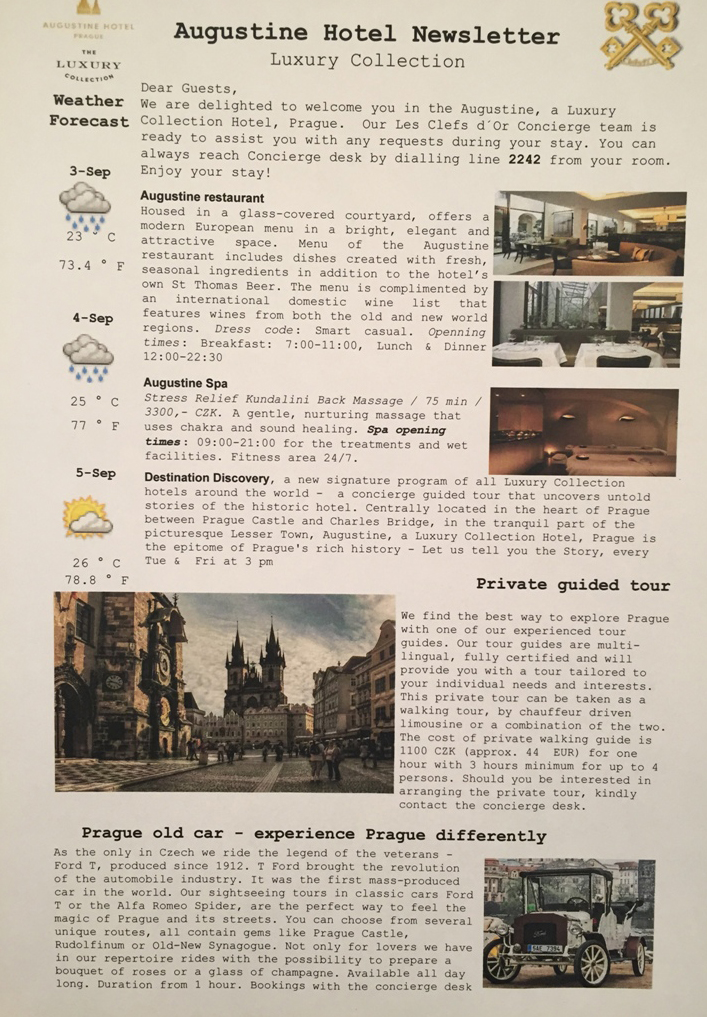
Breakfast at The Augustine...with real honey
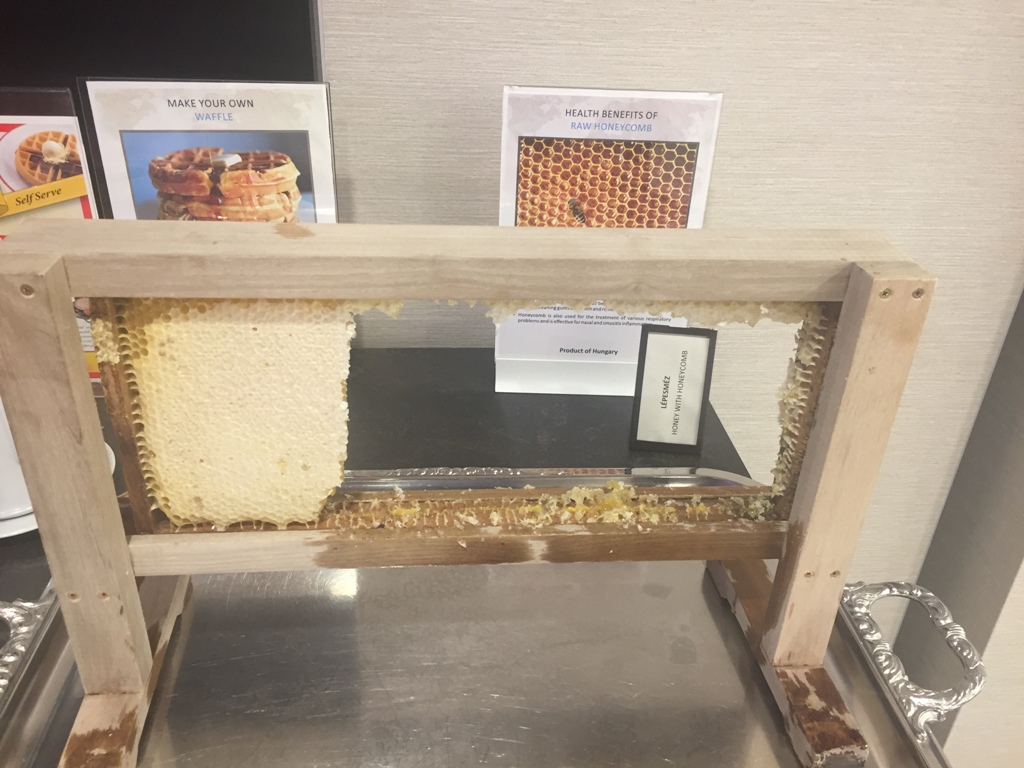

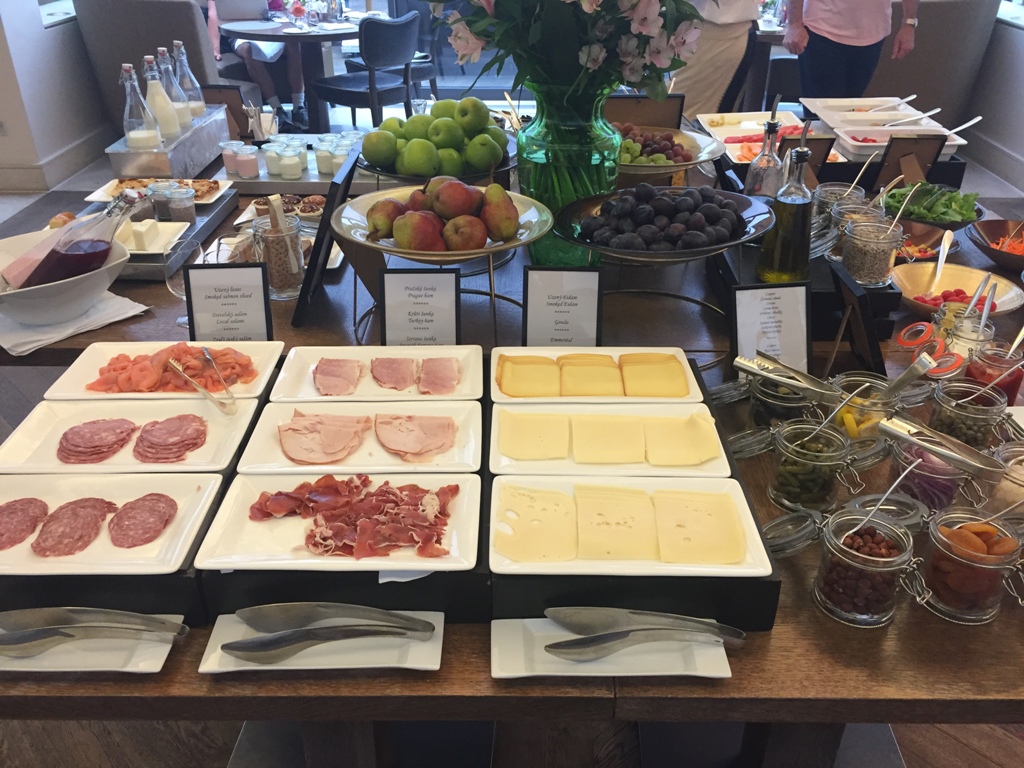
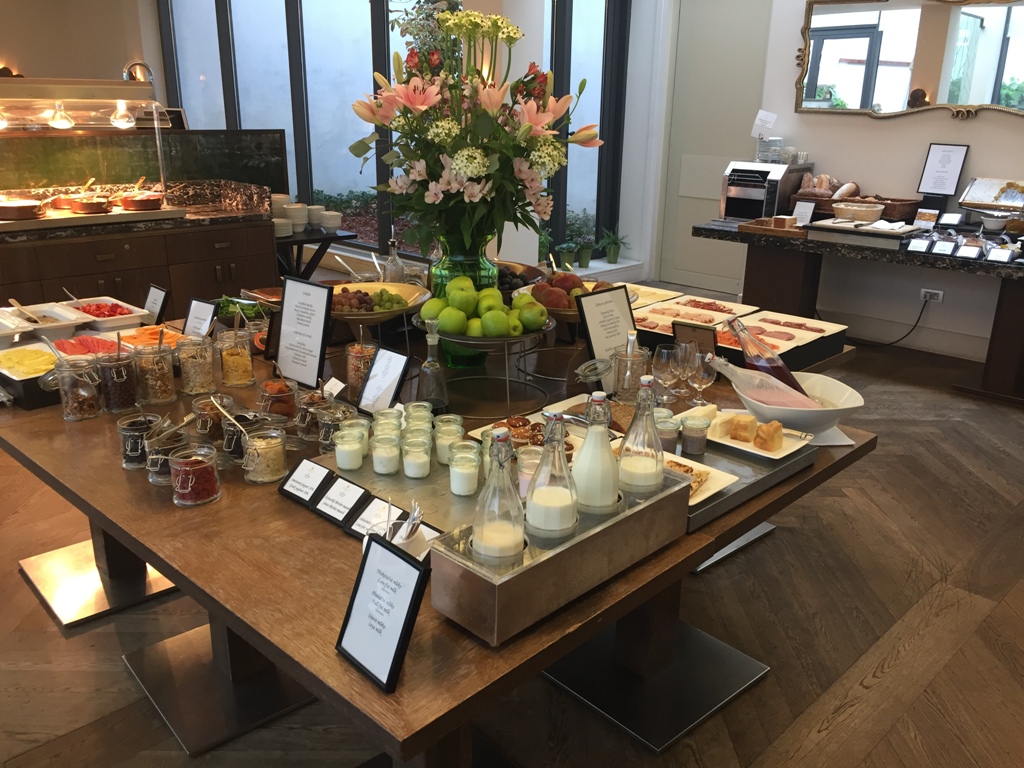
If you've forgotten that we are in Prague, remember what I said before about the manhole covers?
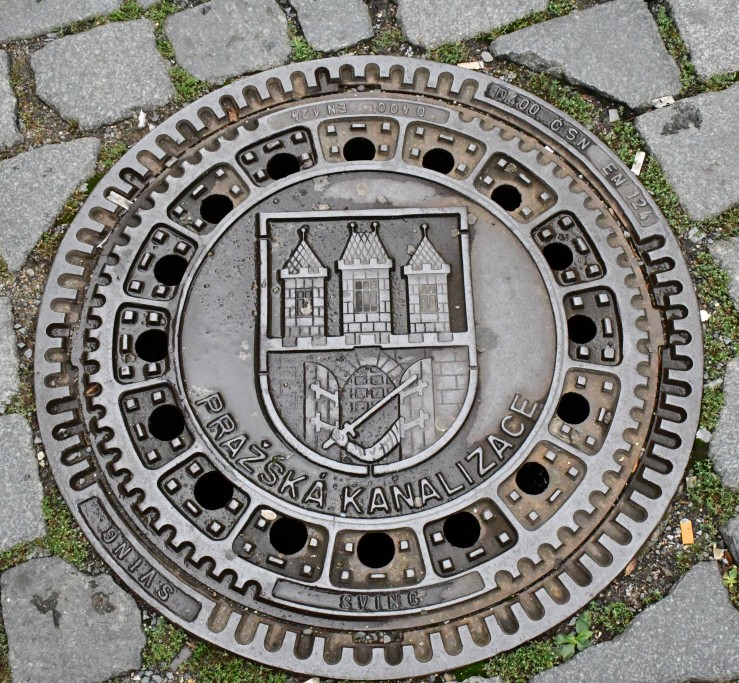
Our first tour of the day...which happens to be the first day of school for the kids. As a precaution, the police are known to stop large buses etc to verify the credentials of all so that no kids go missing. Yes, we got pulled over.
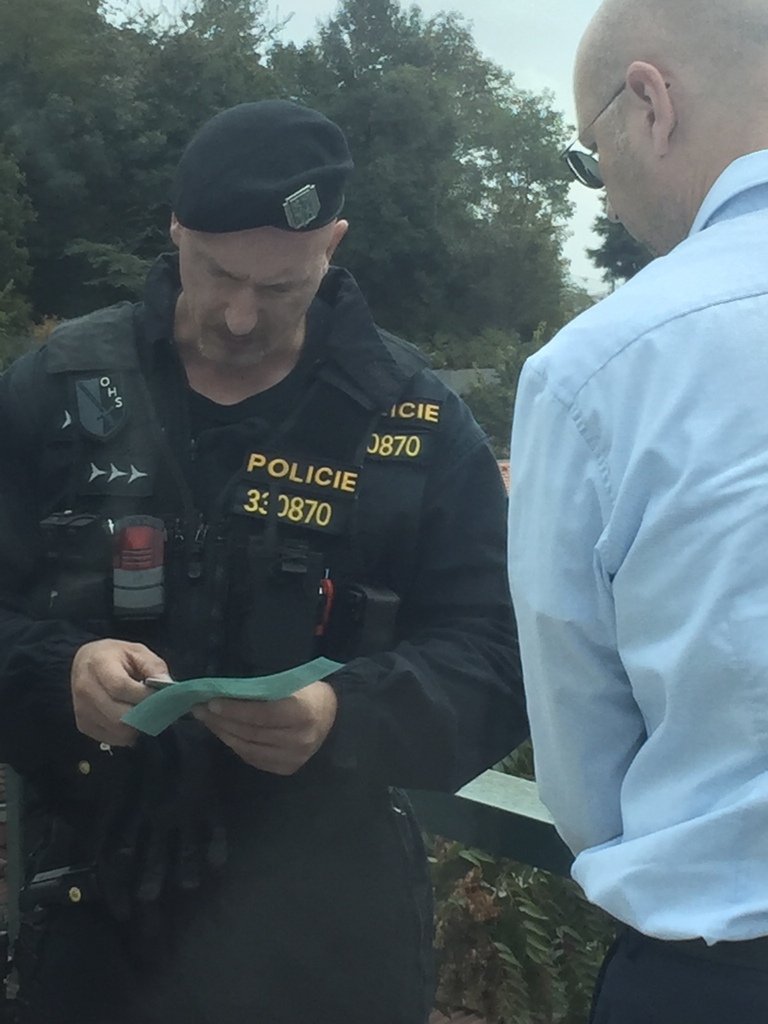
One thing I failed to highlight in my ramblings on, is that each of the Viking tours provides you with a box and ear plugs. The box communicates with the tour guide who is telling us about the highlights of the area. Therefore, we are not tethered to the guide and are able to walk around freely while still hearing what she/he has to say. This has made it really exciting because I can take pictures, lag behind and yet always know where they are. However, if it only had the ability to have two-way communication ;)
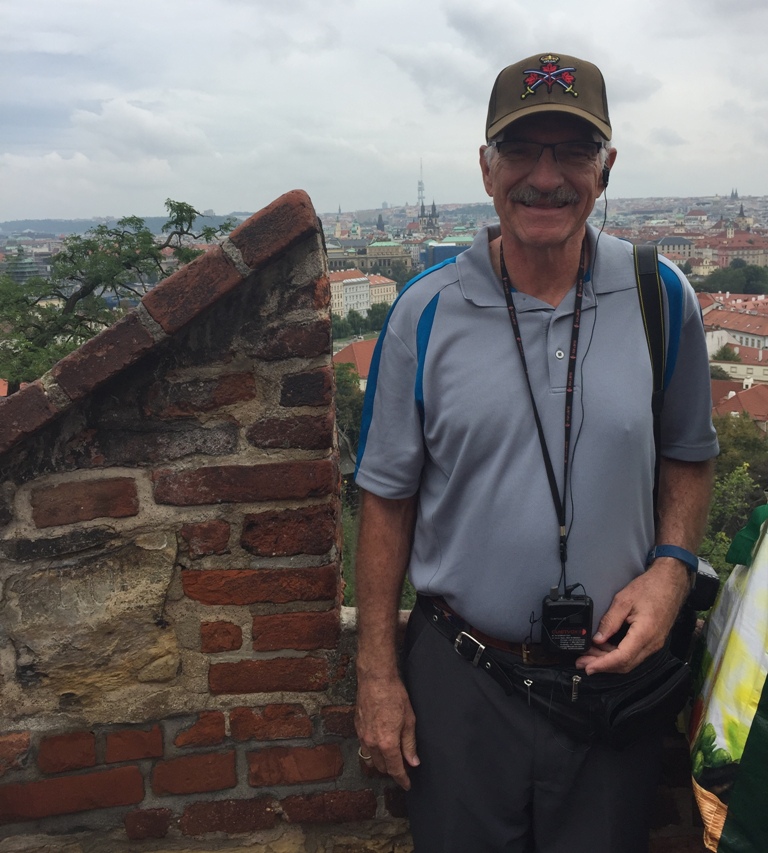
We saw a changing of the guard. Organizational structure:
This military unit has a total of 660 persons (86 officers, 110 warrant officers, 412 sergeants, 52 civil employees). The Guard is organized into: Headquarters comprising from Castle Guard headquarters, personnel headquarters and logistics. Then 1st and 2nd battalion, Castle Guard Orchestra, Police of CR and the Security company.
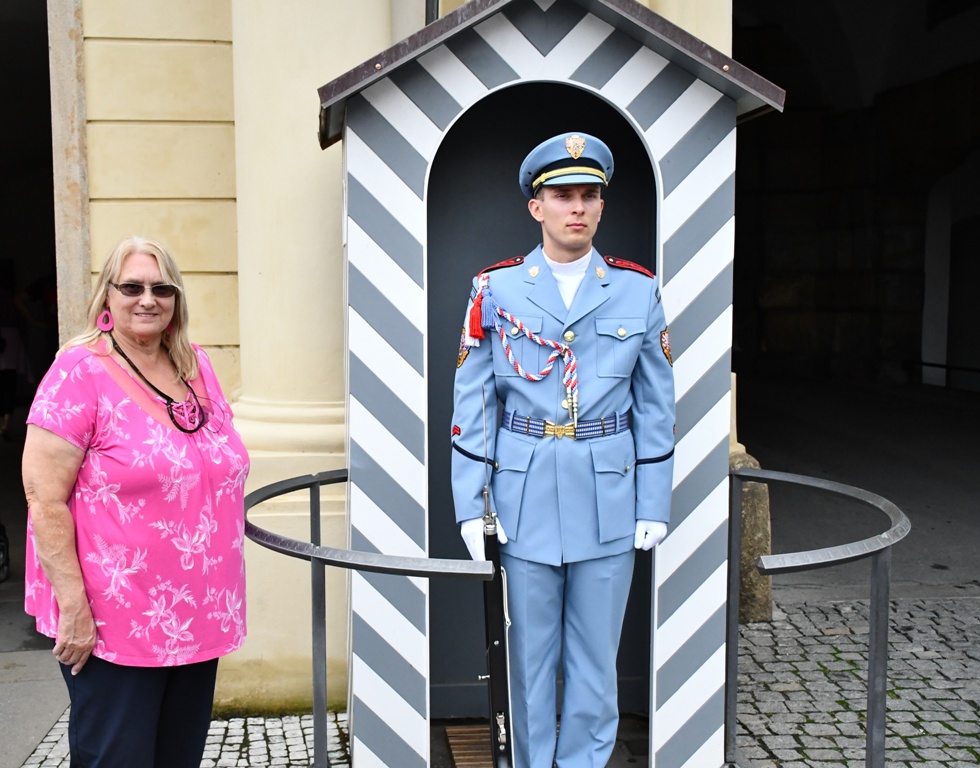
Great step and good coordination. I love the fact that though this is ceremonial, there is an armed guard there who keeps the guards safe
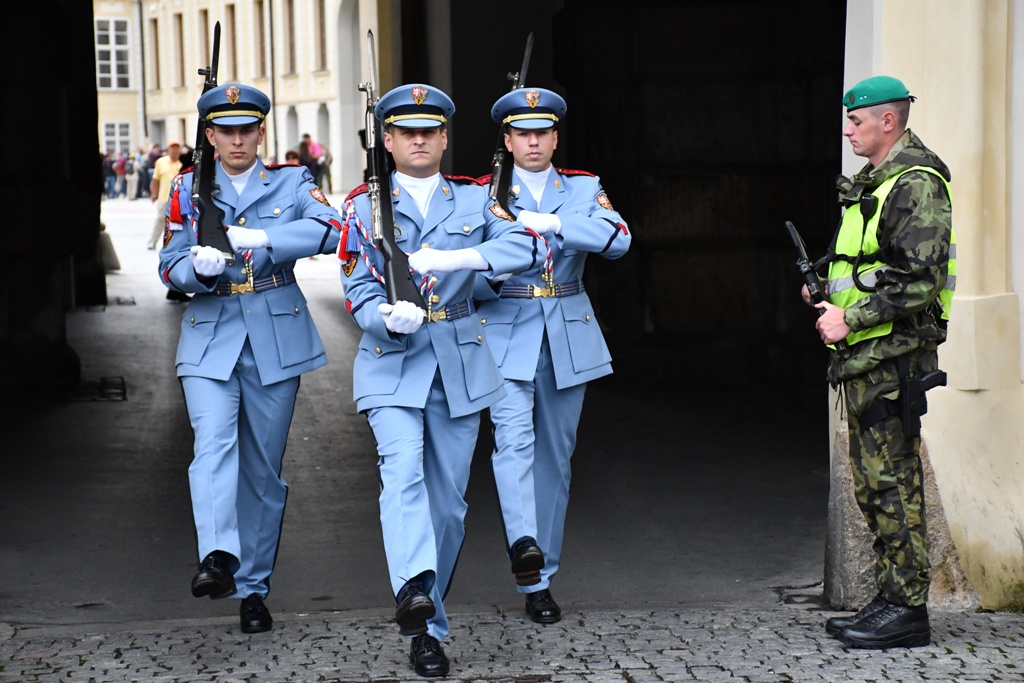
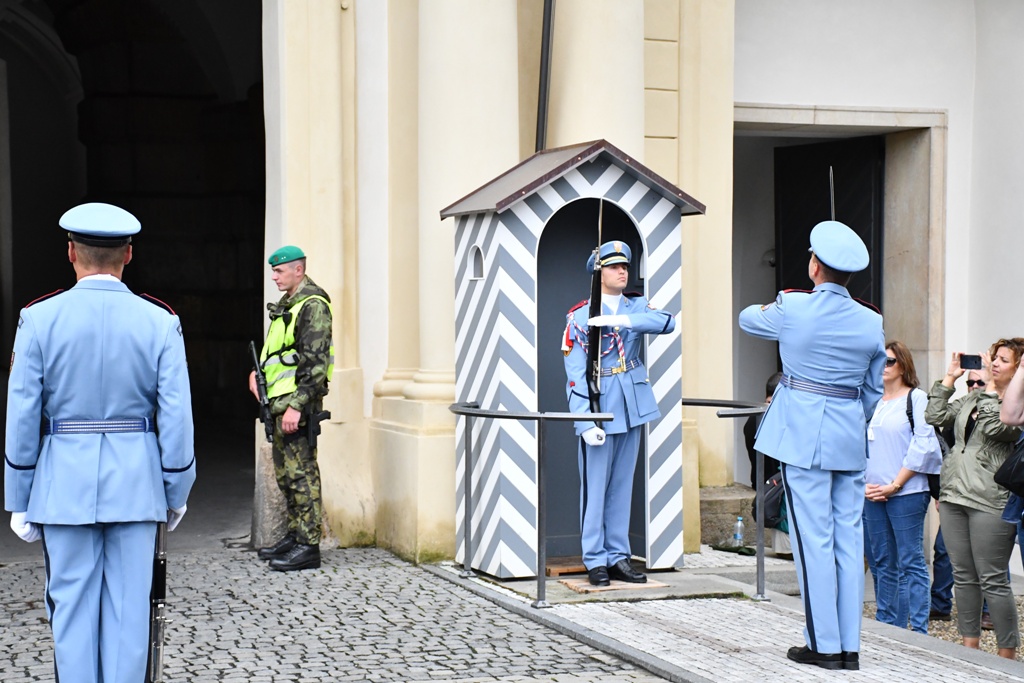
Inside, this is where the president would be. We know he is here today as security is tight.
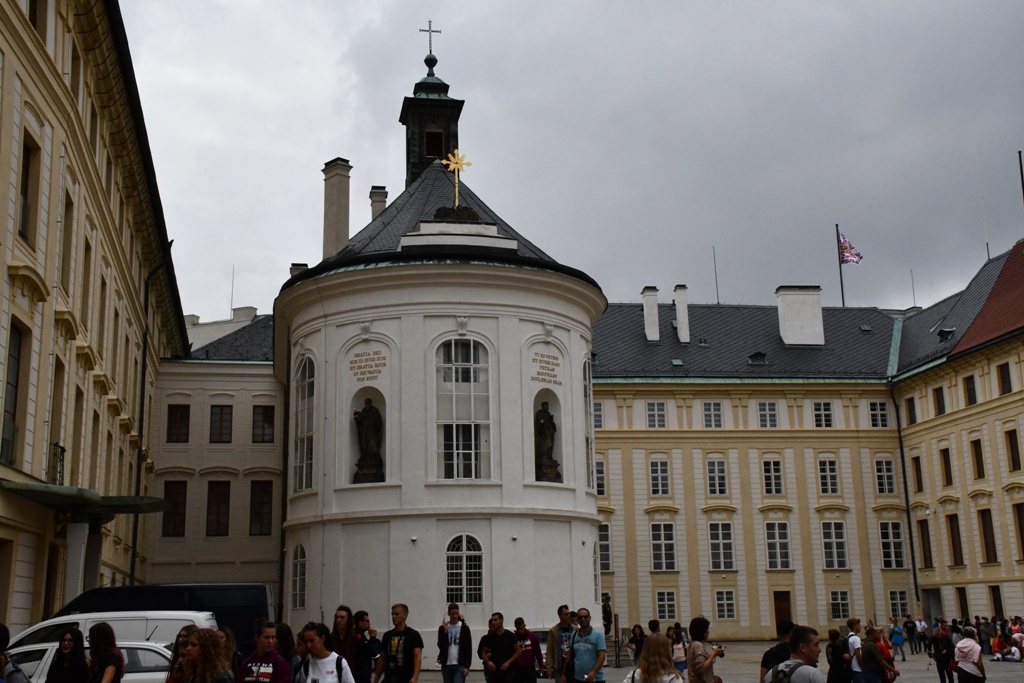
In Prague I learned the term Defenestration - the act of throwing someone or something out of a window. The term was coined around the time of an incident in Prague Castle in the year 1618, which became the spark that started the Thirty Years' War.
St Vitas Cathedral
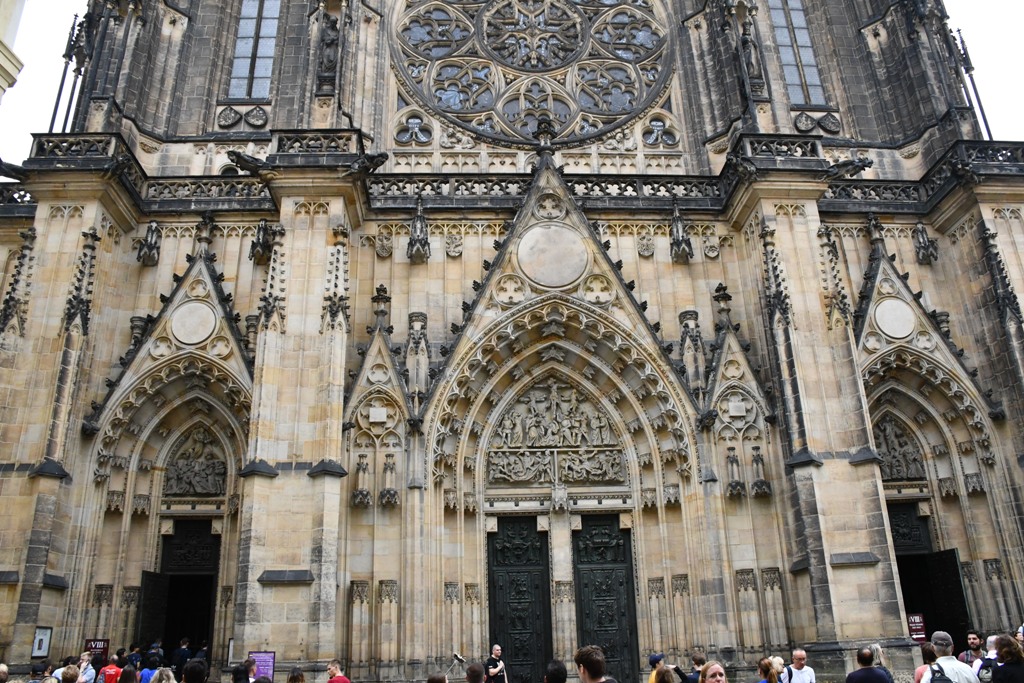
SCULPTURE OF SAINT VOJTĚCH, FELLOW SAINTS, INSTALLED IN ST. VITUS CATHEDRAL, this was just installed in 2018
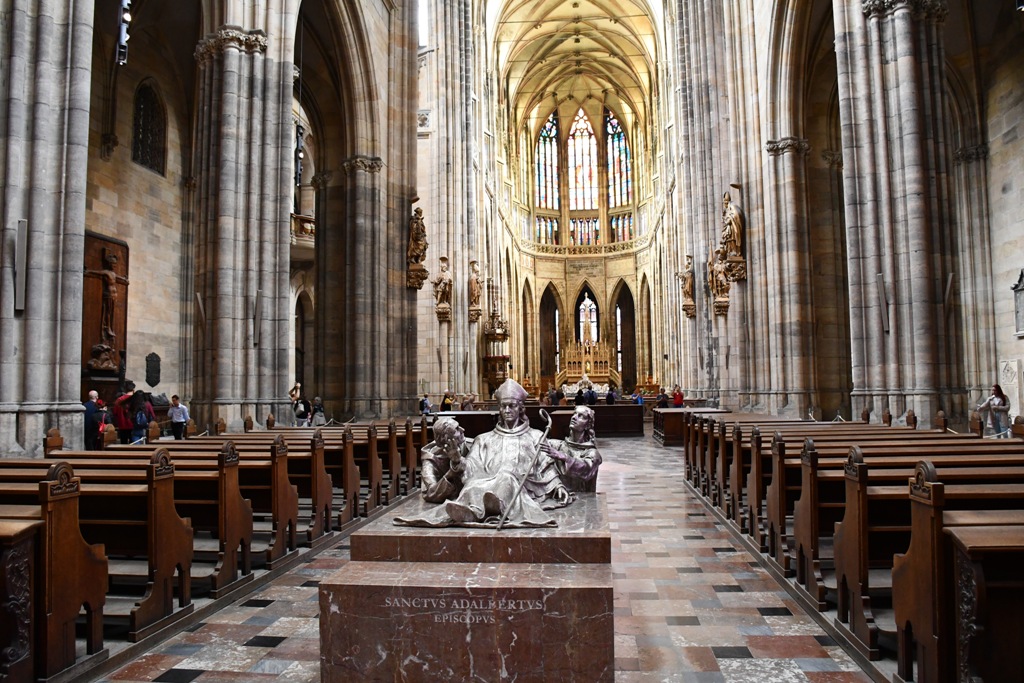
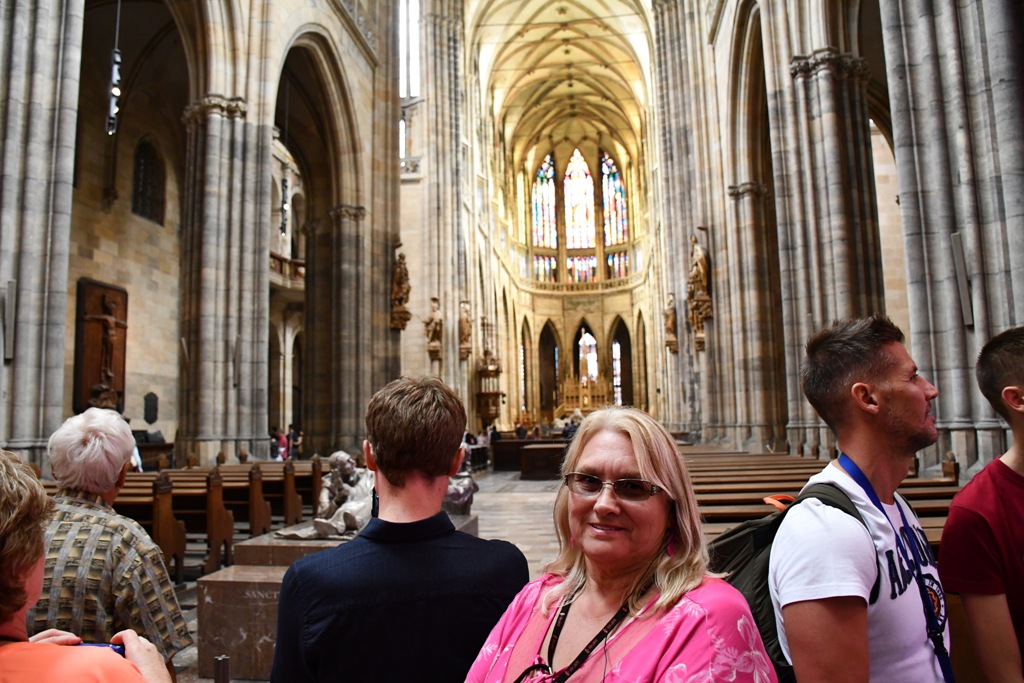
Here is another novel way that the clocks in Prague (St Vitus Cathedral) tell time. Can you guess what time it is? (Answer is at the end of the page)
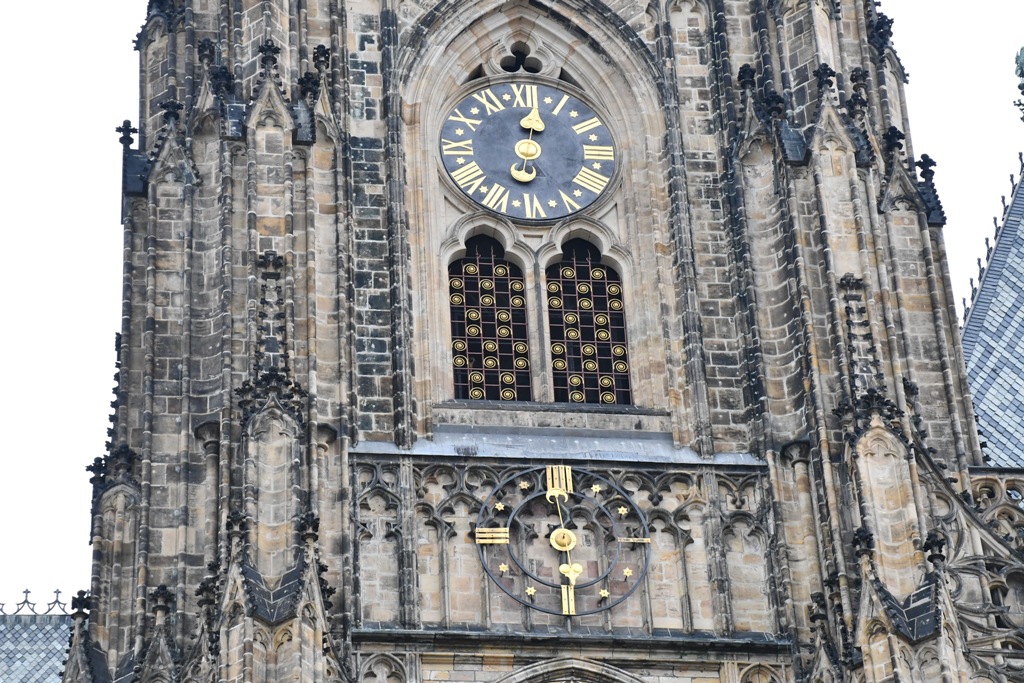
The tour guide brought us through the gates at St Charles bridge. I paced ahead to take a picture while hardly anyone was there. It is rare...maybe it was because of the hour of the day - early.
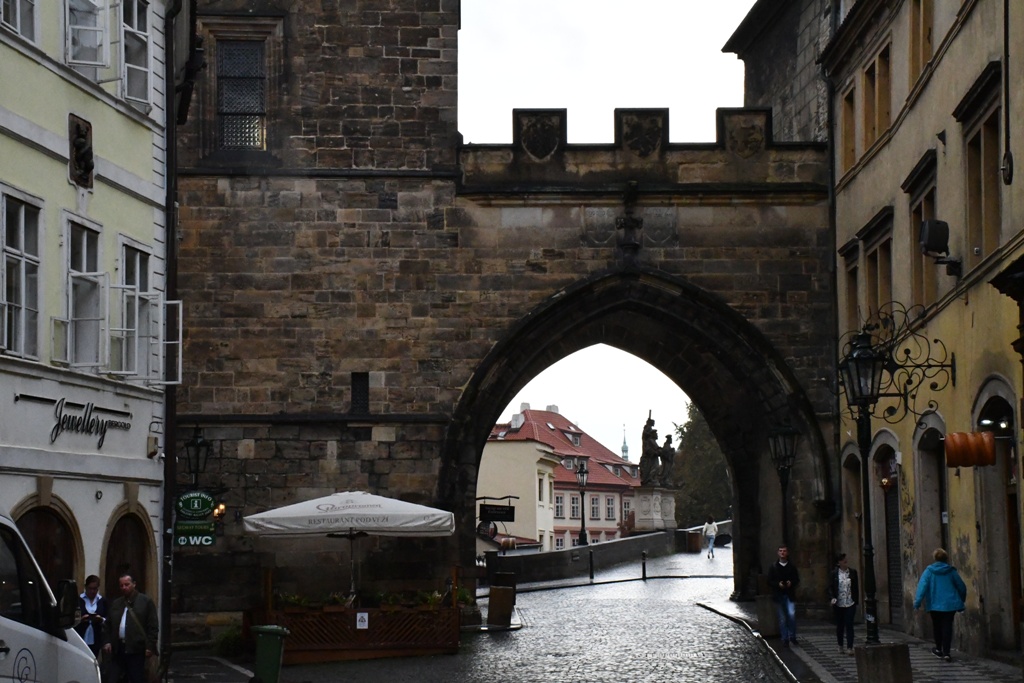
This is the John Lennon wall. In 1988, the wall was a source of irritation for the communist regime of Gustáv Husák. Young Czechs wrote grievances on the wall and in a report of the time this led to a clash between hundreds of students and security police on the nearby Charles Bridge. The movement these students followed was described as "Lennonism" and Czech authorities described these people variously as alcoholics, mentally deranged, sociopathic, and agents of Western capitalism.
The wall continuously undergoes change and the original portrait of Lennon is long lost under layers of new paint. Even when the wall was repainted by some authorities, by the next day it was again full of poems and flowers. Today, the wall represents a symbol of global ideals such as love and peace.
The wall is owned by the Sovereign Military Order of Malta, which allowed the graffiti to continue on the wall, and is located at Velkopřevorské náměstí (Grand Priory Square), Malá Strana.
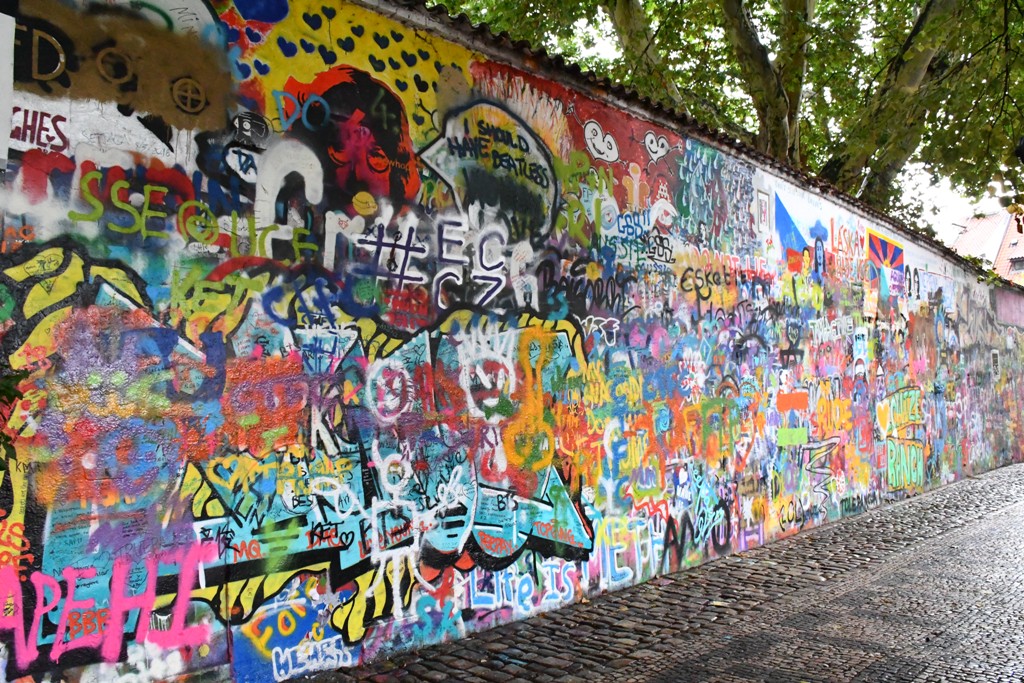
Notice the heads...well done!!

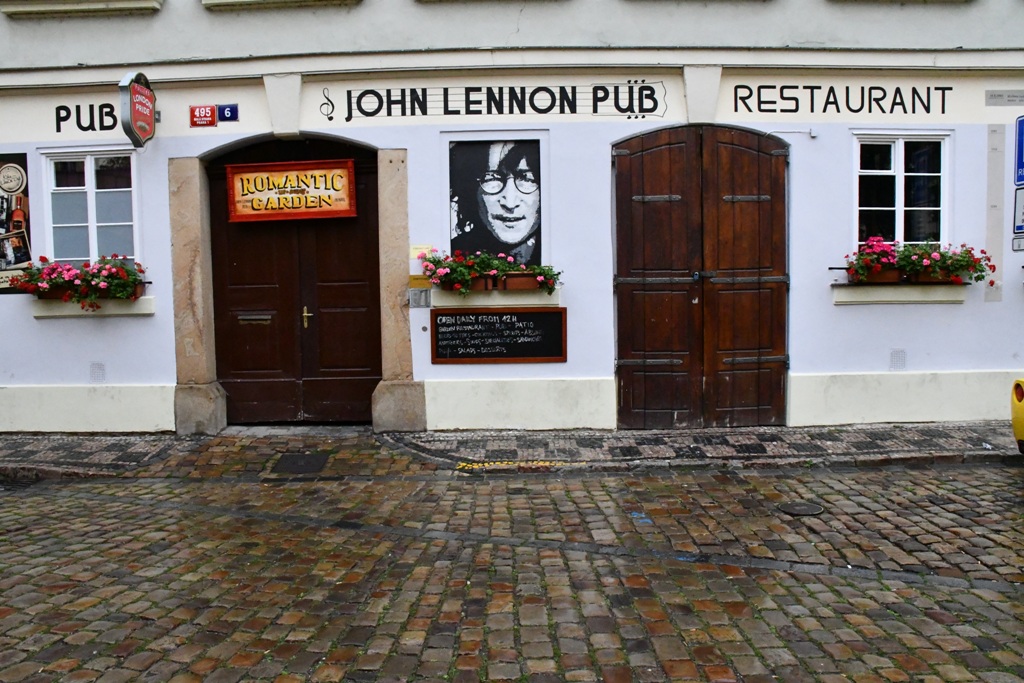
The wall is on a small plaza next to a little canal off the Vlatava River, below the Charles Bridge in Mala Strana area (Little Quarter) on the Prague Castle side. They have some waterways in Prague that allow little gondolas. The authentic Venetian gondola “Eleonora” is a real historic treasure hailing from 1858, when the Habsburg Monarchy was in Venice. I was standing on what is known as the Bridge over Devil Stream
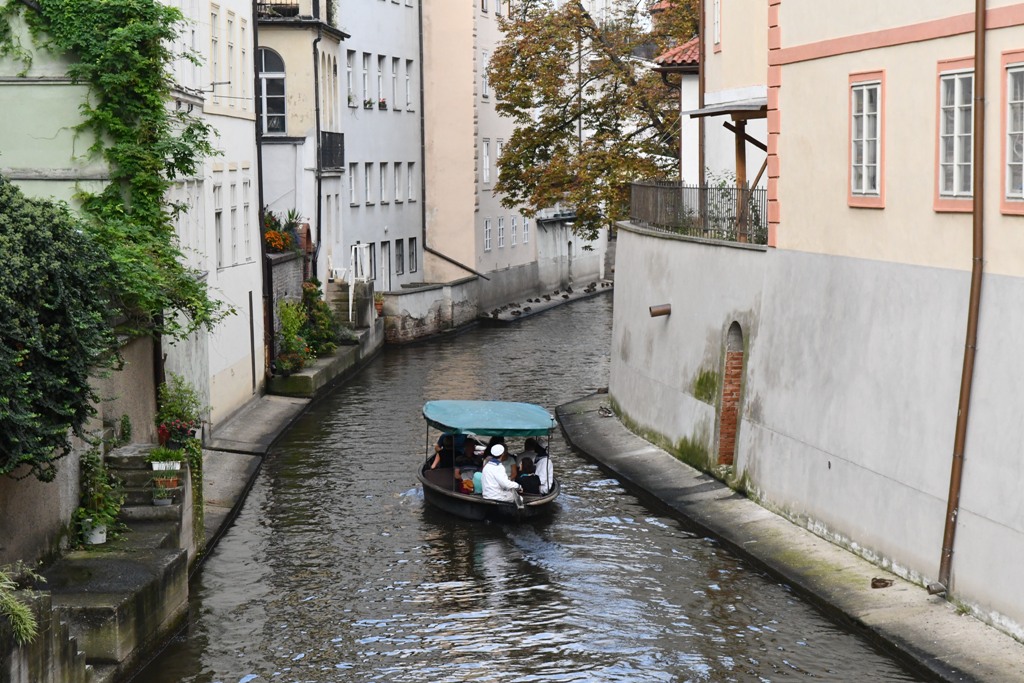
Behind the Legion Bridge there is s narrow branch separated from the course of Vltava along Říční Street in the Lesser Town; before it was called just a „ditch“, later on it was Devil’s Stream. It forms the island of Kampa, which has been called Prague Venice, as well. Origin of the name of previous Devil’s mill-creak has not been explained unambiguously. Mostly, its water peacefully drove wheels of the local mills. However, when a flood came, it was bad. Water started to rise and endangered houses on the river bank. Then the local people said: „the ditch got annoyed again (became a devil)“. It is one of the possible reasons for its name. Another popular explanation says that once a quarrelsome and shrewish elder woman lived there and thus her neighbours called her „devil bag“, or „the devil“. And the mill-creak is said to be named after her.
Till now there are two mill wheels rotating on the Devil’s Stream. They are by the previous mills, Huť and Grand Priory one. But they are only mementos of the previous time serving for pleasure of visitors of that romantic place. The Devil’s Stream is spanned over with several bridges. The biggest of them, which may be even passed through by motor traffic, runs below the Charles Bridge from Kampa to the Lesser Town. There is situated U Lužického semináře Street, which continues slightly up along the Charles Bridge to the Square of Dražický. The area is surrounded with historical houses and from the small embankment it is possible to observe the Devil’s Stream which changes the direction of its course there. There can be also seen an unusual view of mill wheel of the previous Great Priory mill. Particularly in the evening, atmosphere is completed with silhouettes of sculptures and sculptural groups up on the Charles Bridge.
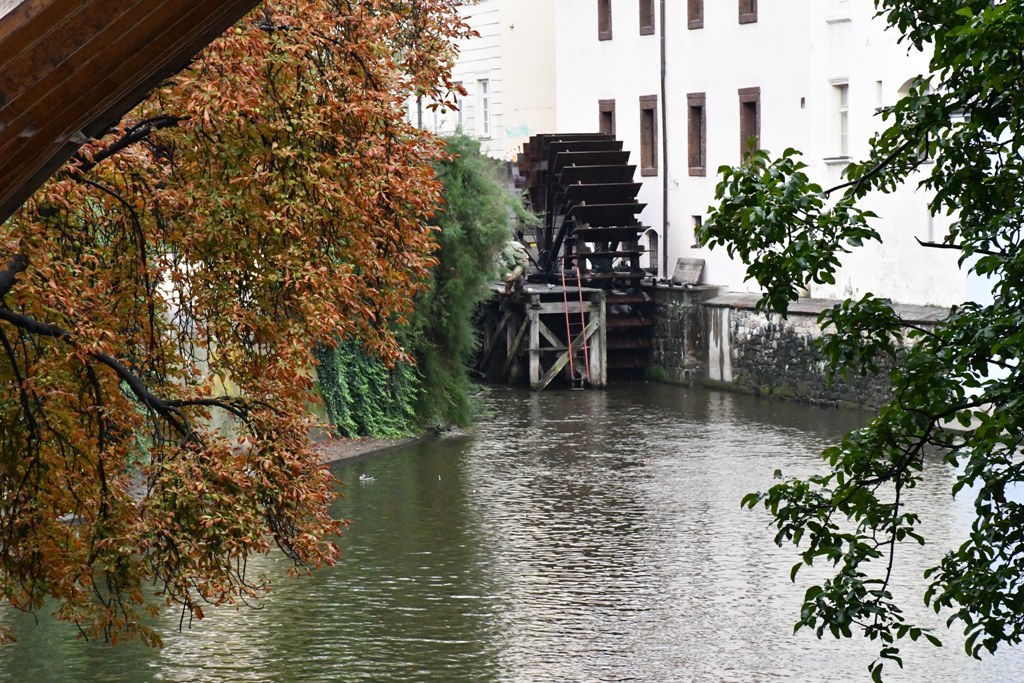
One will not believe how dangerous the calm course of the Devil’s Stream can be in a flood. But it can be witnessed by plates on the surrounding houses from September 1890 or August 2002, where the water reached then.
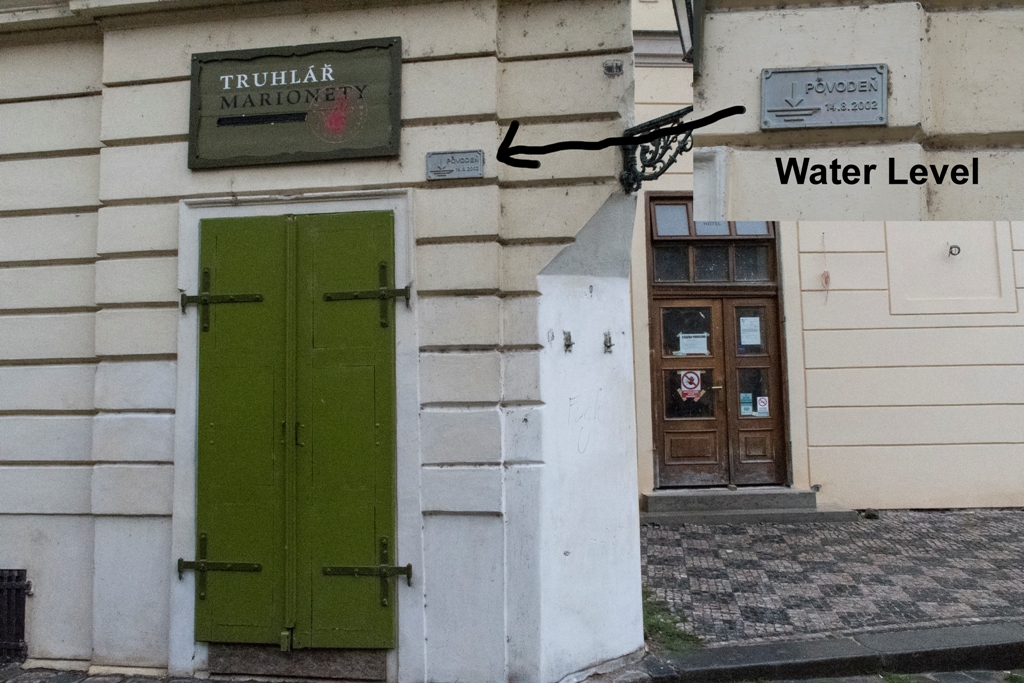
Which is why they have this system in place where, with the key, you can have the water barriers (a type of levee) rise above to protect the houses, all this since 2002.
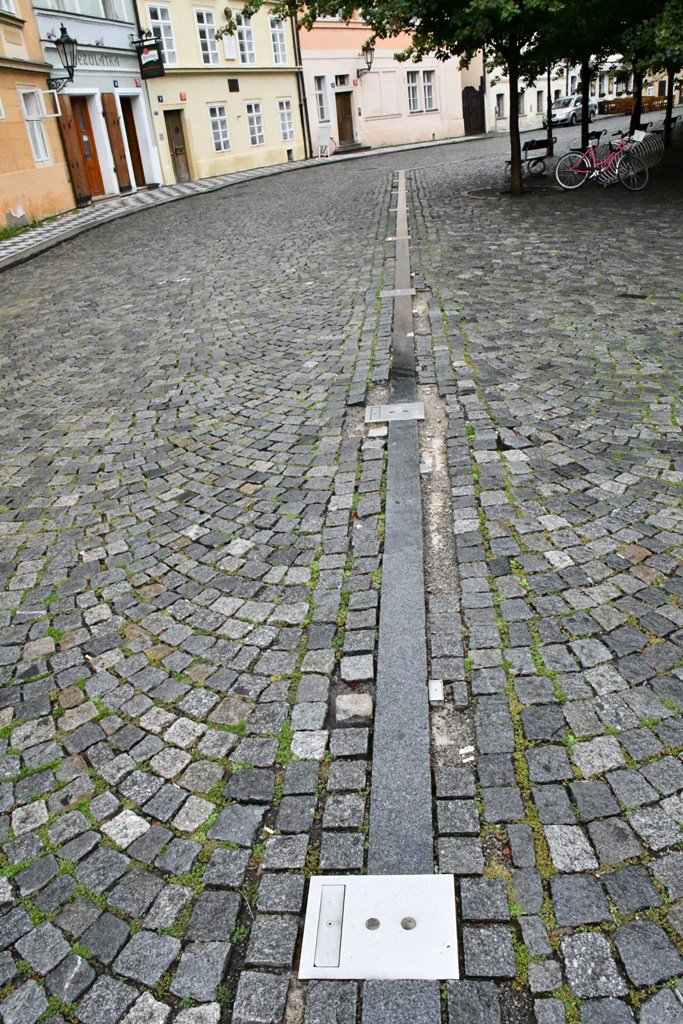
The Franz Kafka Museum is a museum located in Prague dedicated to the author Franz Kafka. The museum hosts a number of first edition Kafka books as well as displays original letters, diaries and drawings created by Kafka. We never got to go in, time is always the pressing factor when visiting a location. We were here, so we took the opportunity to at least get a picture and look at the posters.
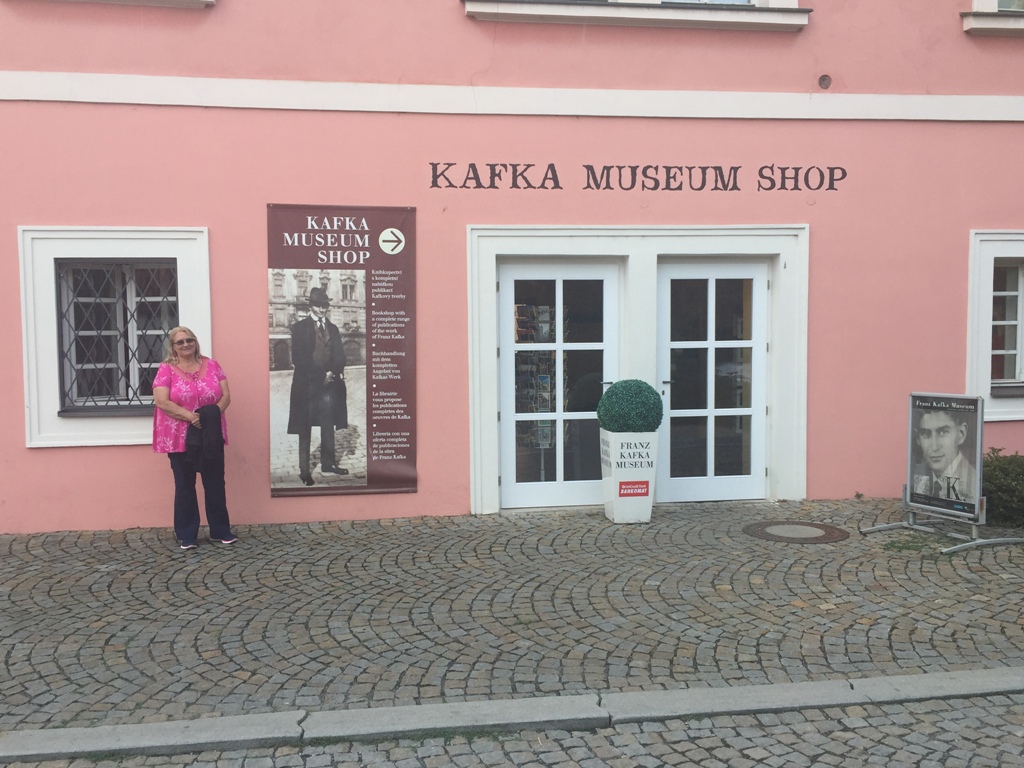
Jan Hus (1369 - 1415) is considered the first church reformer. His teachings had a strong influence on the states of Western Europe, most immediately in the approval of a reformed Bohemian religious denomination, and, more than a century later, on Martin Luther himself. He was burned at the stake for heresy against the doctrines of the Catholic Church. The Jan Hus Memorial stands at one end of Old Town Square. The huge monument depicts victorious Hussite warriors and Protestants who were forced into exile 200 years after Hus in the wake of the lost Battle of the White Mountain during the Thirty Years' War, and a young mother who symbolises national rebirth. The monument was so large that the sculptor designed and built his own villa and studio where the work could be carried out.
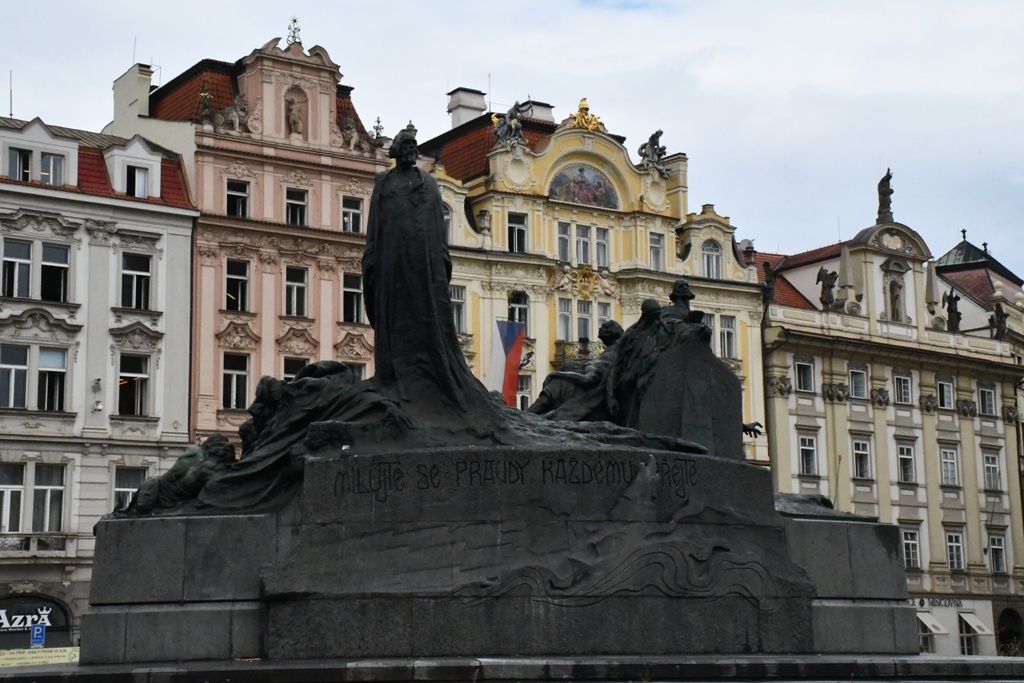
In 1948, the communists made their 1st speech from the balcony of this building and this is the time they considered that Czech became communist.
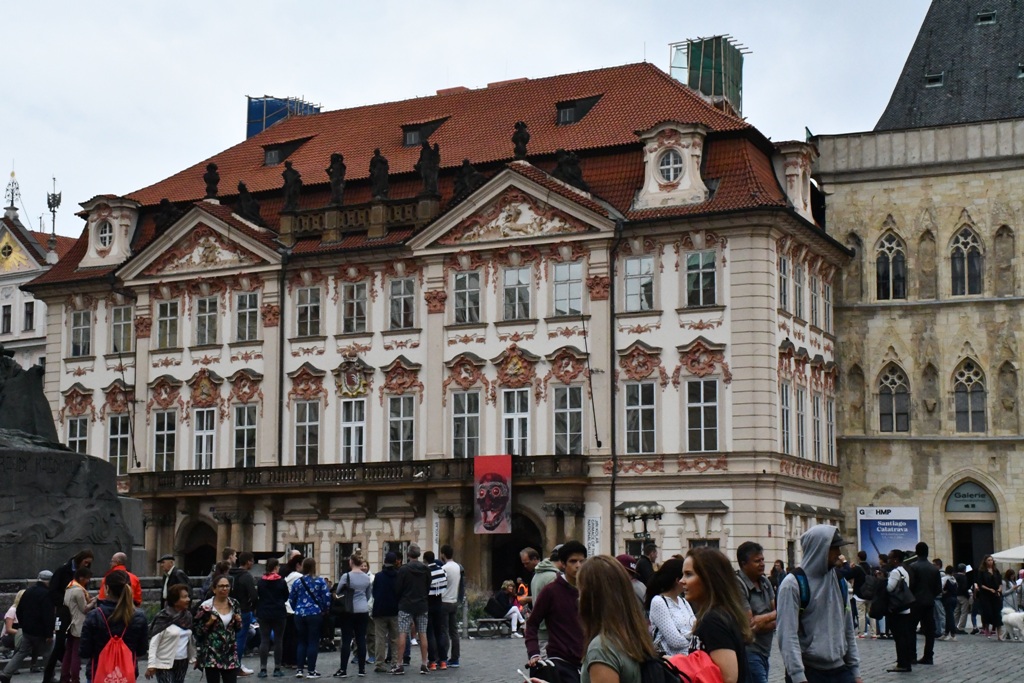
I forget what square we were in, but it was tranquil.
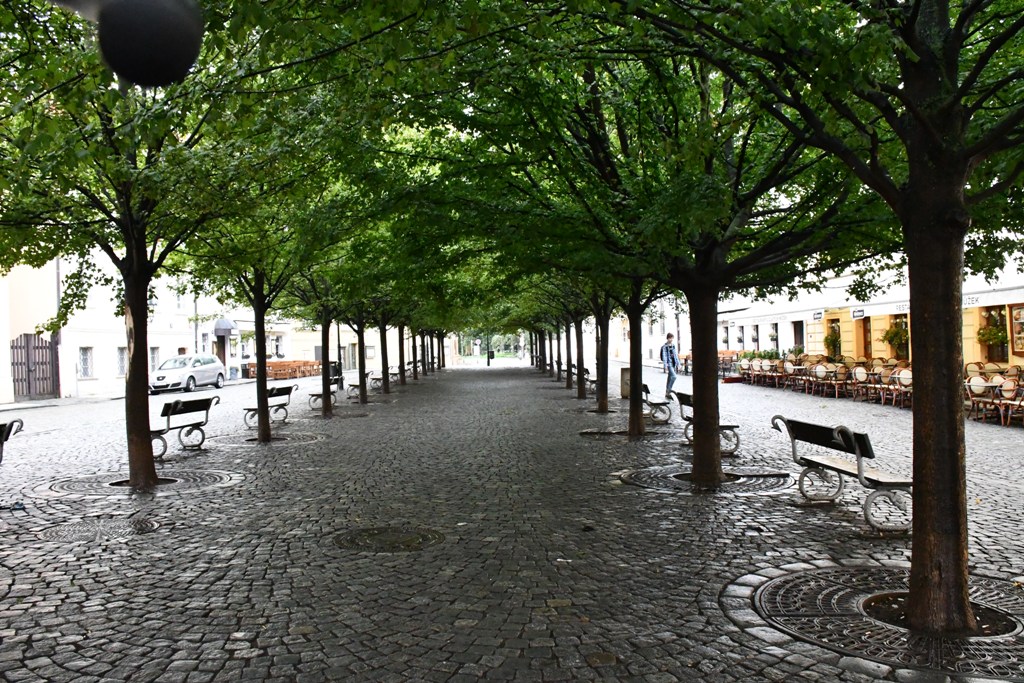
You can not walk around Prague without noticing there are old relics-cars, which are just waiting for someone to take a ride.
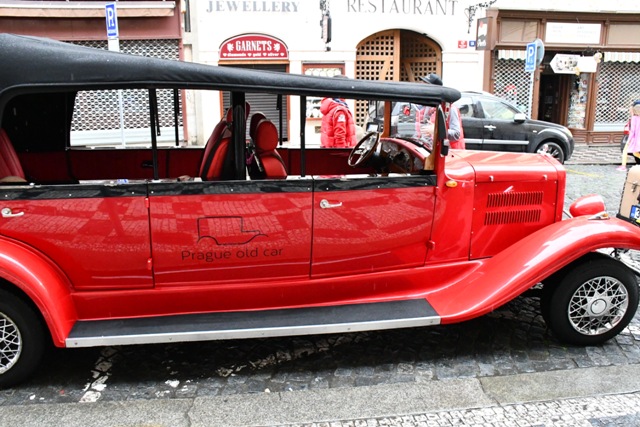
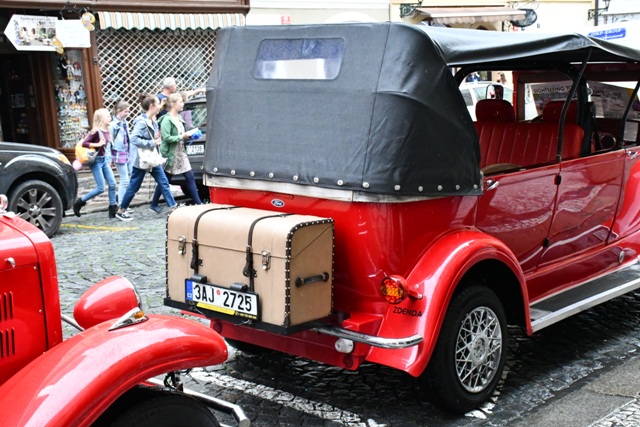
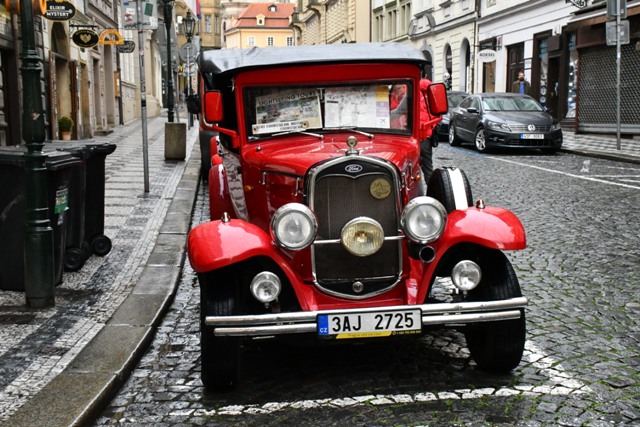
Most narrow building in Prague..

Church of Our Lady before Týn. One of the most impressive Gothic religious buildings in Prague, it was built from the mid-14th to the early 16th centuries. At the end of the 17th century, the interior was reworked in Baroque style. The cathedral serves as an extensive gallery of Gothic, Renaissance and Early Baroque works, the most interesting of which include altar paintings by Karel Škréta and the tomb of the astronomer Tycho Brahe. The organ, dating from 1673, is the oldest in Prague.
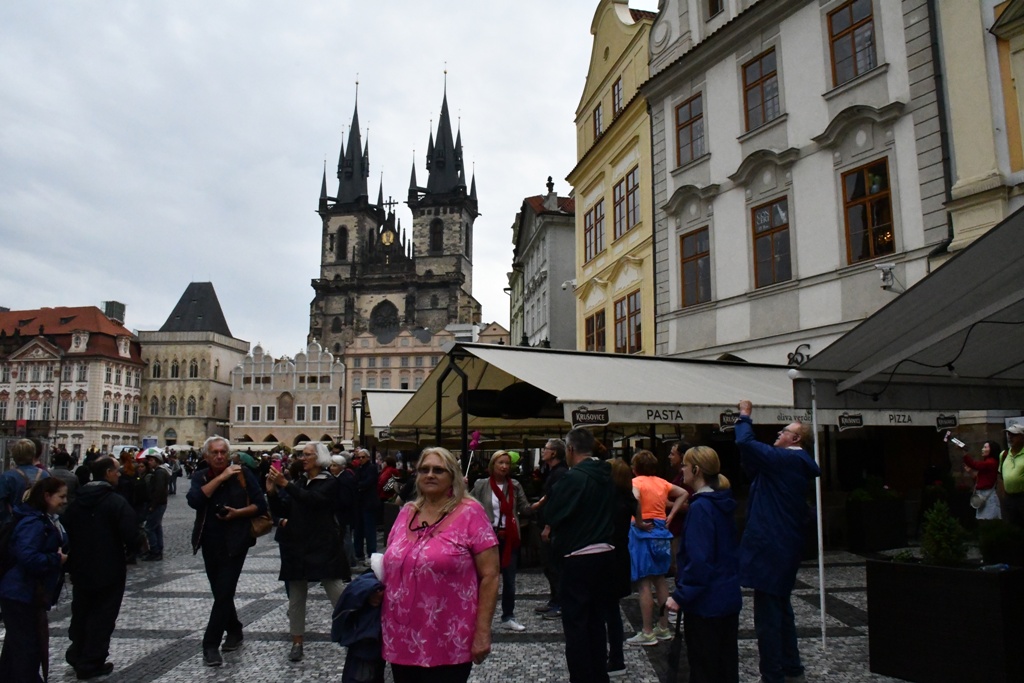
In walking around, you just want to try some of those items...but alas, we did not...they looked good though
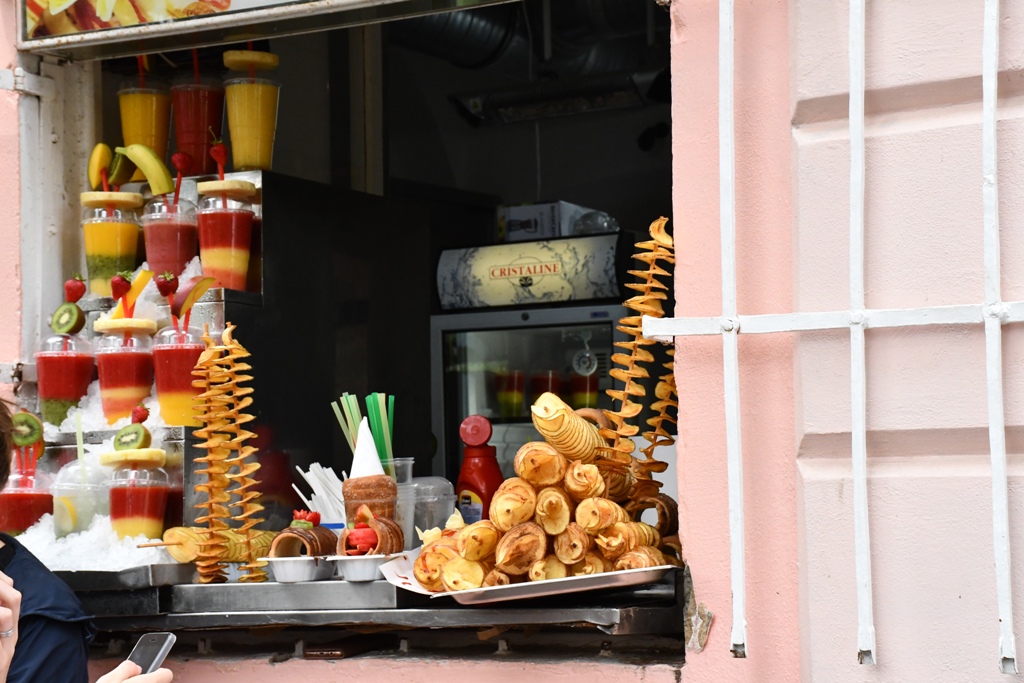
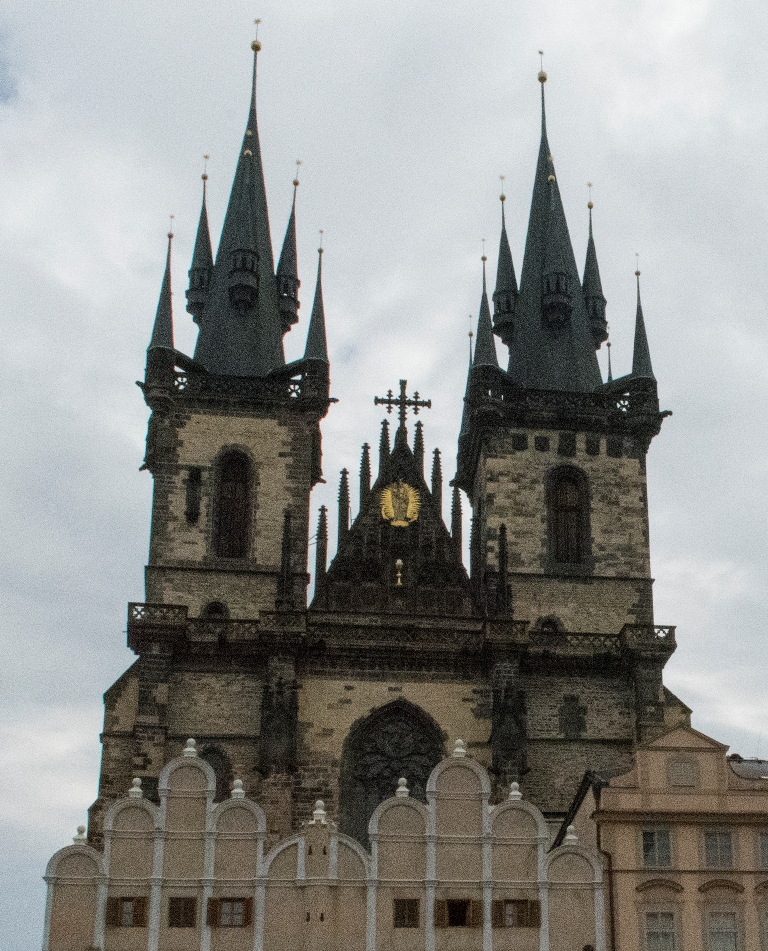
Jewish Town Hall is a Renaissance style building, and it’s built at the end of the 16-th century, with a baroque façade from the 18-th century.
This building is situated in the Jewish Quarter (Josefov), very close to the Old New Synagogue.
It’s very easy to recognize it, because its tower has two clocks. Can you see the clocks and tell why they are different?
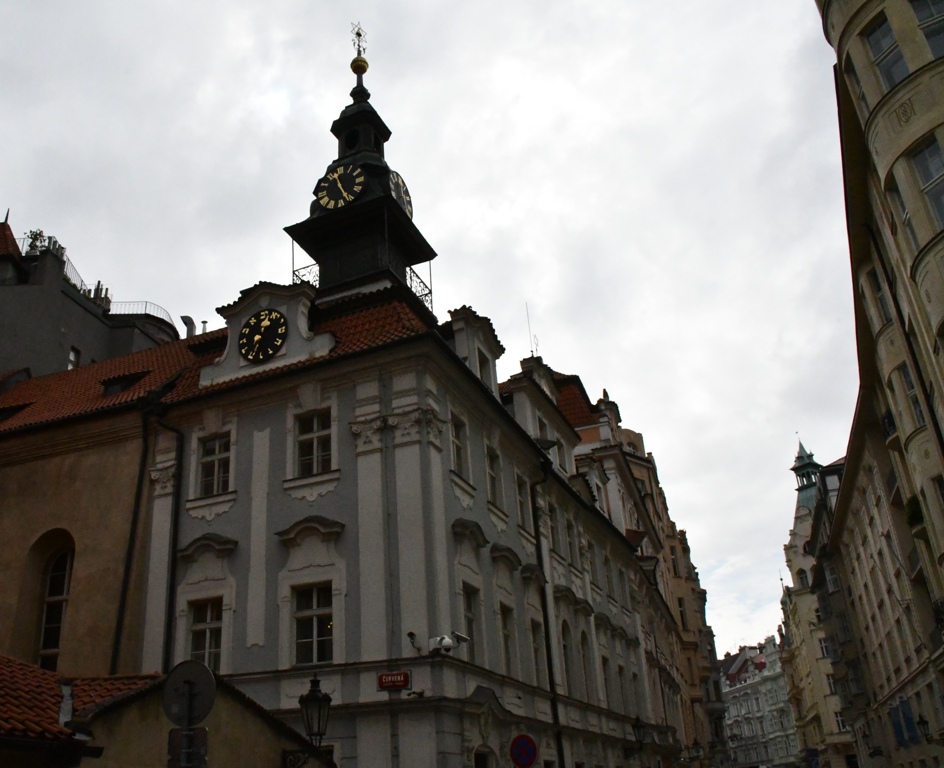
The upper one has Roman numbers, the other has Hebrew numbers, and turns counterclockwise, because the Hebrews read signs from right to left.
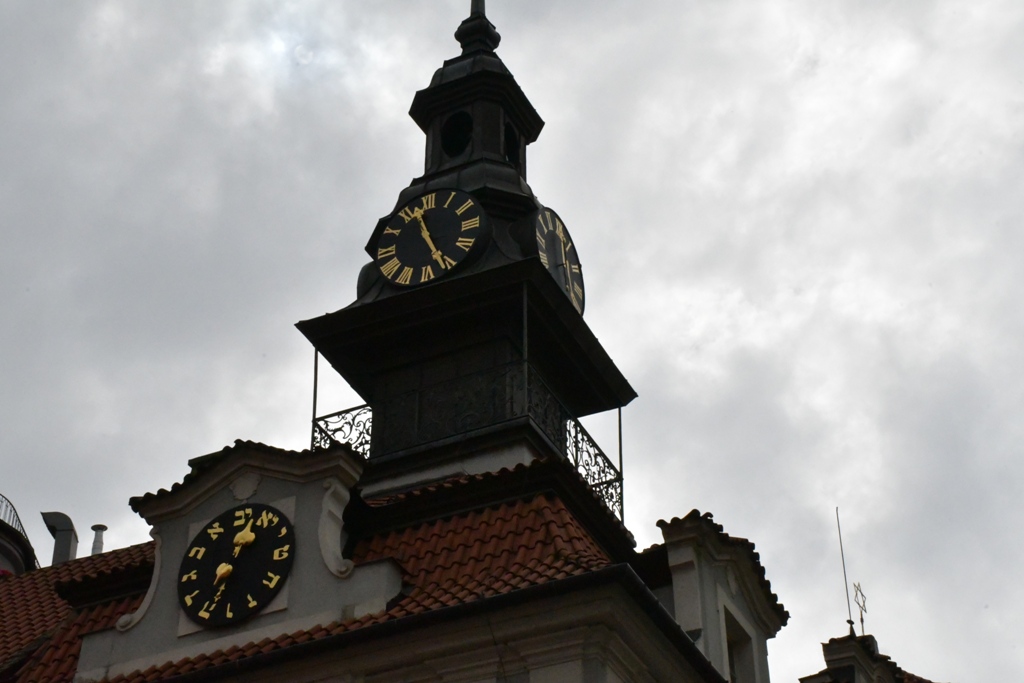
So we also did a visit of the Charles Bridge which is a historic bridge that crosses the Vltava river in Prague, Czech Republic. Its construction started in 1357 under the auspices of King Charles IV, and finished in the beginning of the 15th century. The bridge replaced the old Judith Bridge built 1158–1172 that had been badly damaged by a flood in 1342. This new bridge was originally called Stone Bridge (Kamenný most) or Prague Bridge (Pražský most) but has been "Charles Bridge" since 1870. As the only means of crossing the river Vltava (Moldau) until 1841, Charles Bridge was the most important connection between Prague Castle and the city's Old Town and adjacent areas. This "solid-land" connection made Prague important as a trade route between Eastern and Western Europe.
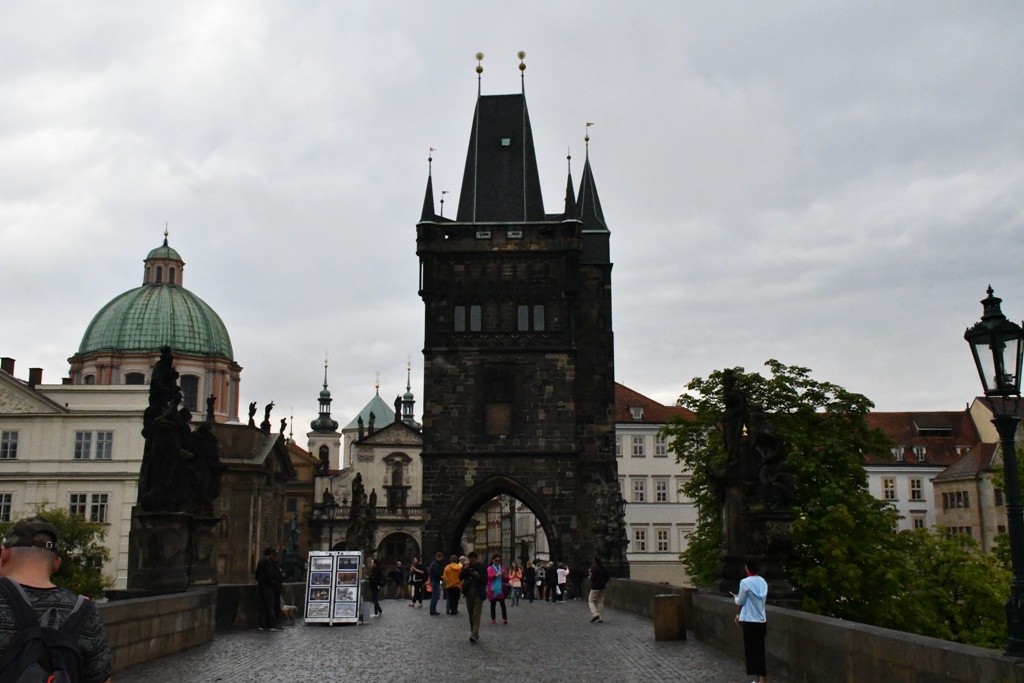
Charles IV was married four times (more than any other Czech ruler) and had 12 children in wedlock. Each wife brought new land. It is said that they are statues of his wives below him.
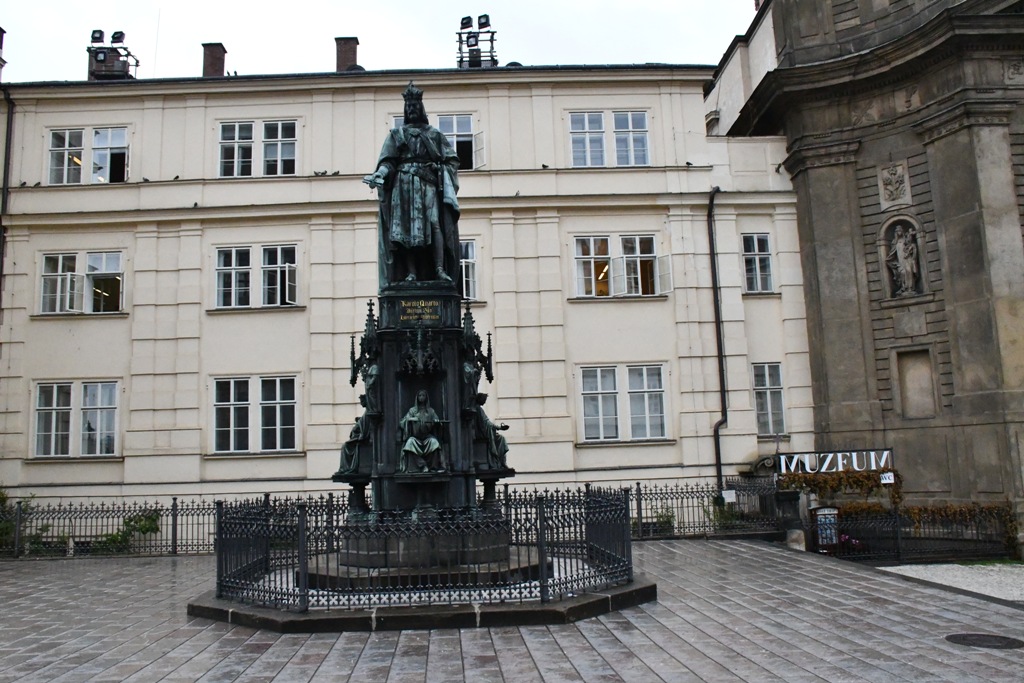
The most popular statue is probably the one of St. John of Nepomuk, a Czech martyr saint who was executed during the reign of Wenceslas IV by being thrown into the Vltava from the bridge. This is the oldest statue, dating back to the 18th Century.

The plaque on the statue has been polished to a shine by countless people having touched it over the centuries. Touching the statue is supposed to bring good luck and ensure your return to Prague. So Sharon made a wish....
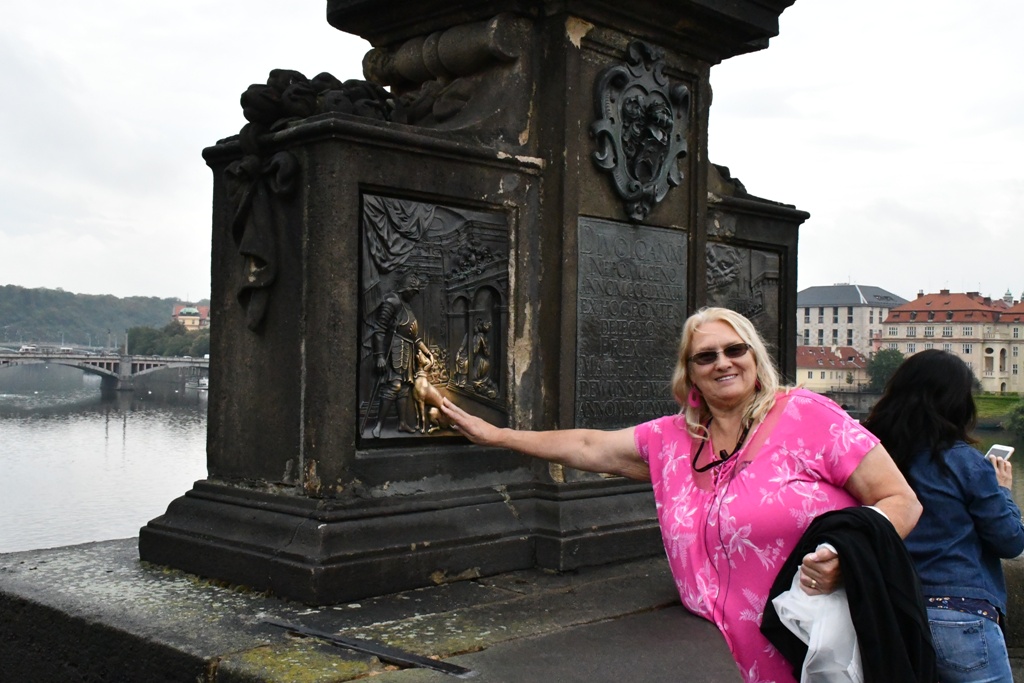
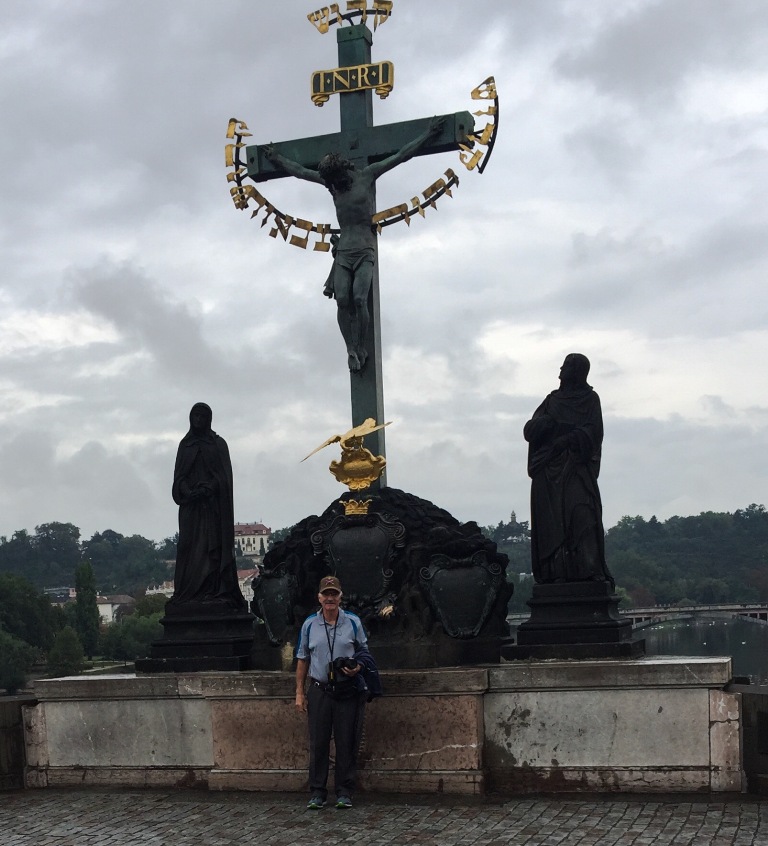
Just below us, there is a wedding going on...well, wedding pictures

But, there is MY BRIDE
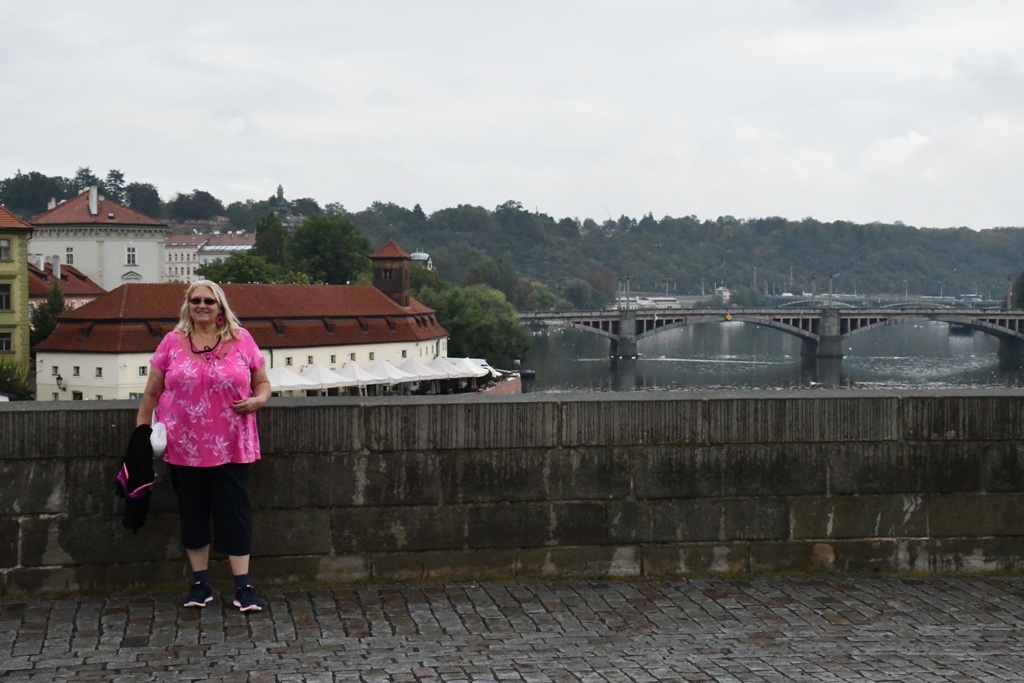
The Church of Saint Nicholas is a Baroque church in the Lesser Town of Prague. It was built between 1704-1755 on the site where formerly a Gothic church from the 13th century stood, which was also dedicated to Saint Nicholas. You can see it in the background. It is located in the Lower Square. In front the building houses a Starbucks...which is where we took a break. The building use to be an Old Jesuit location.
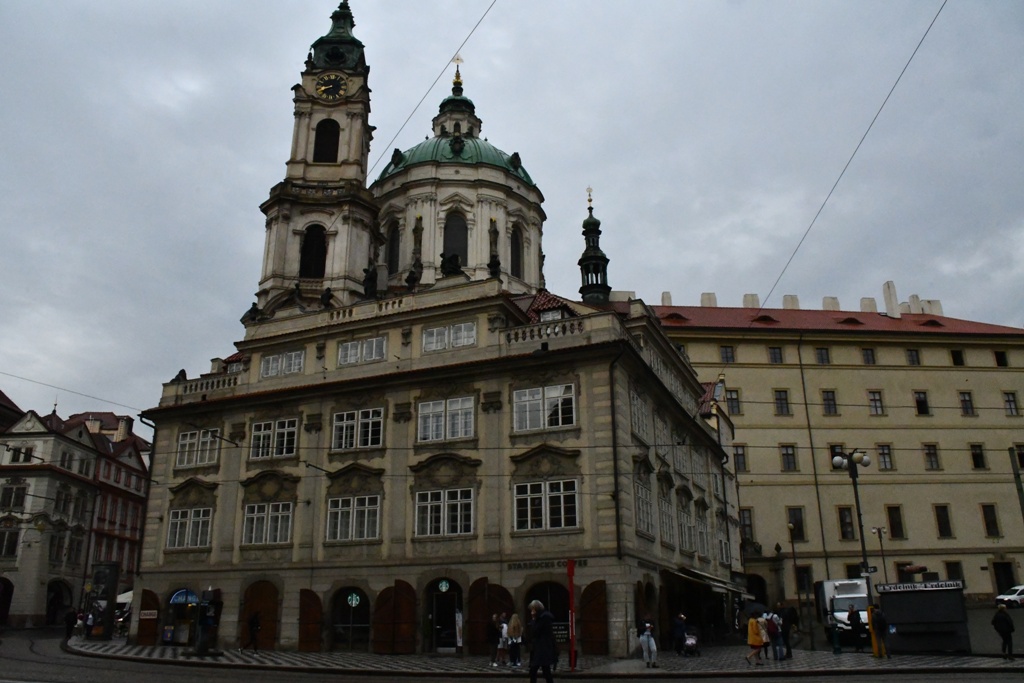
Interesting note about this picture is that there is a wooden window in the church (never wrote down the name) under the Clock and it is where the secret police use to spy on the embassy in the area.

Starbucks having the clocks from around the world and to the right is a map where people have come from. It hasn't been updated. In talking with tour guide, Starbucks only came to Prague 10 years ago.
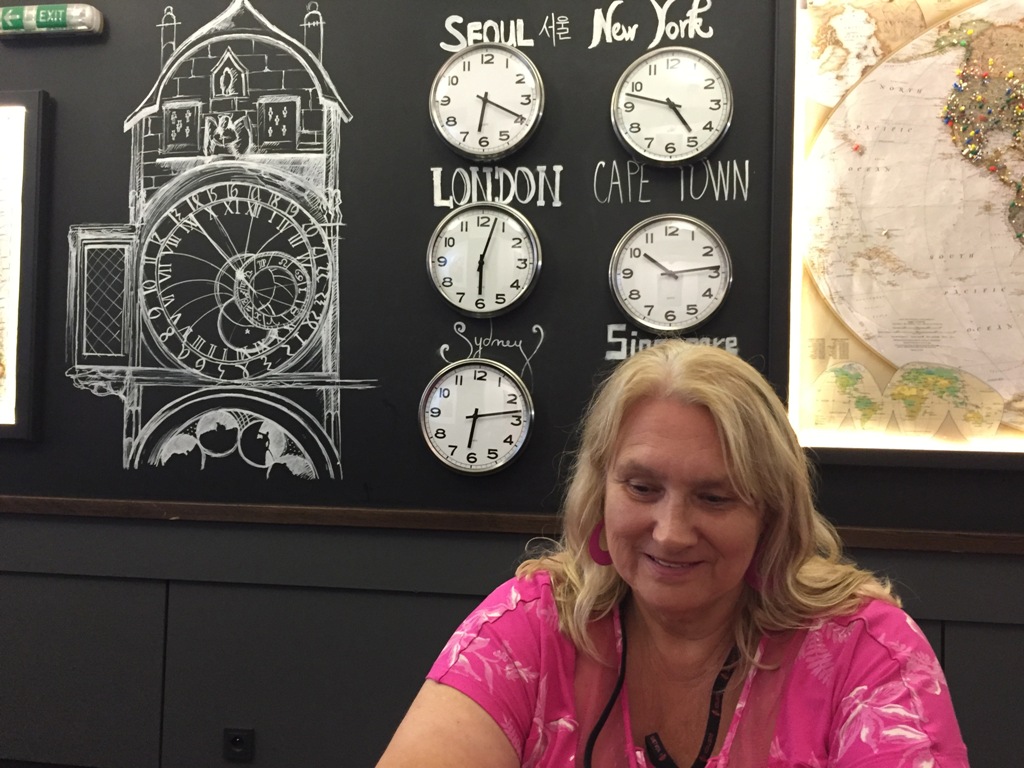
Here's a look at St Charles Bridge in the afternoon
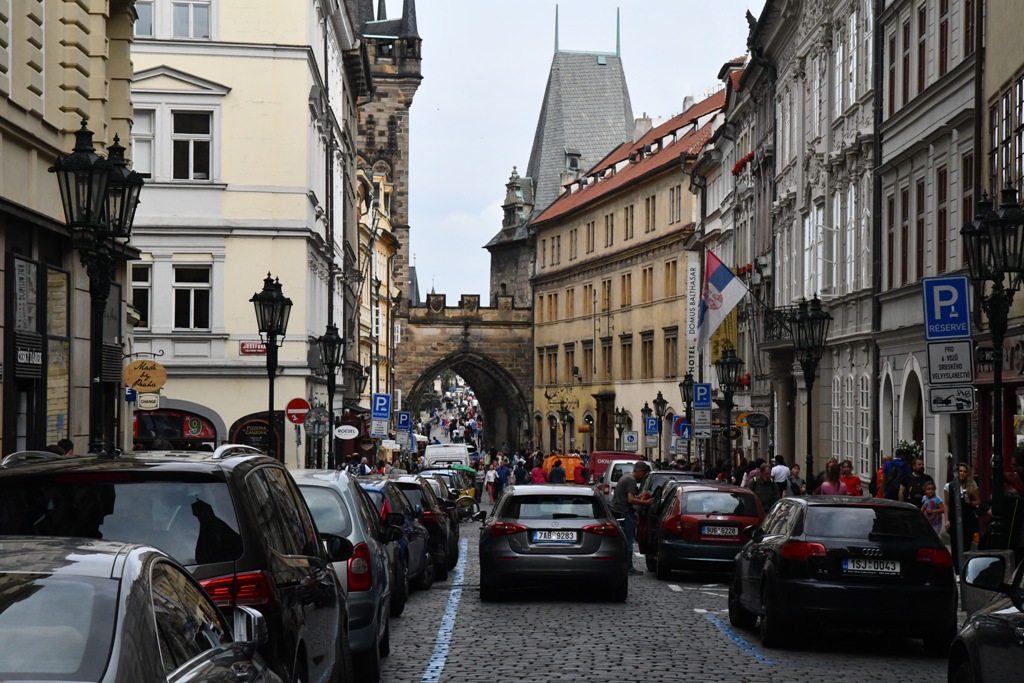
Going back to the hotel has one distinct disadvantage...getting there through the goings and comings of the trams. Here is one going as we walk into the entrance. The ones coming are even closer to the entrance.
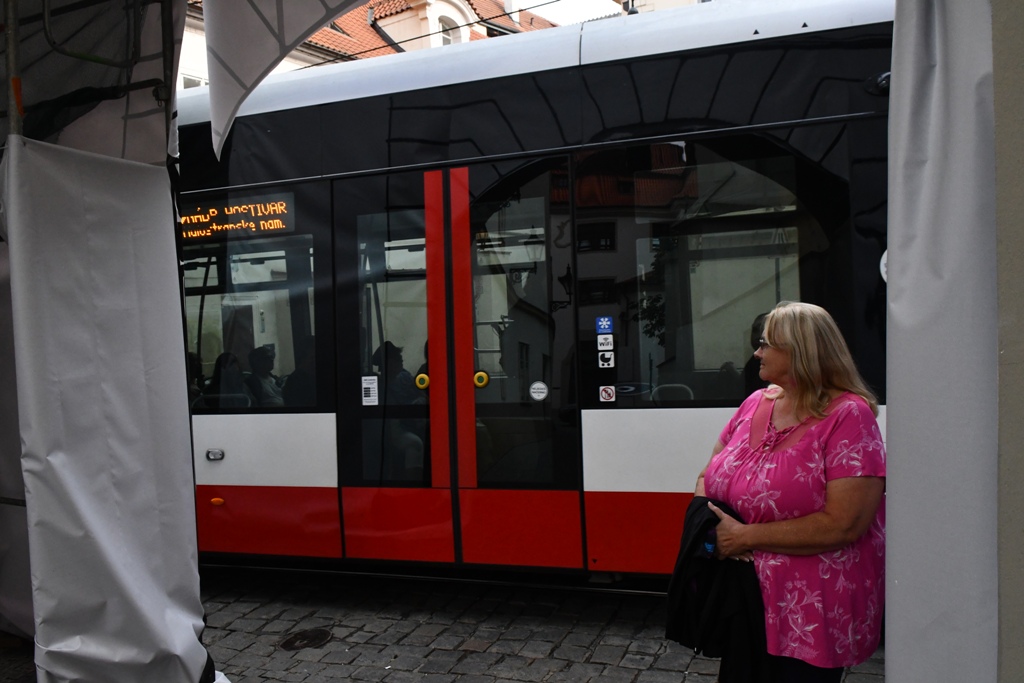
Our main door is to the right where that green felt is located.
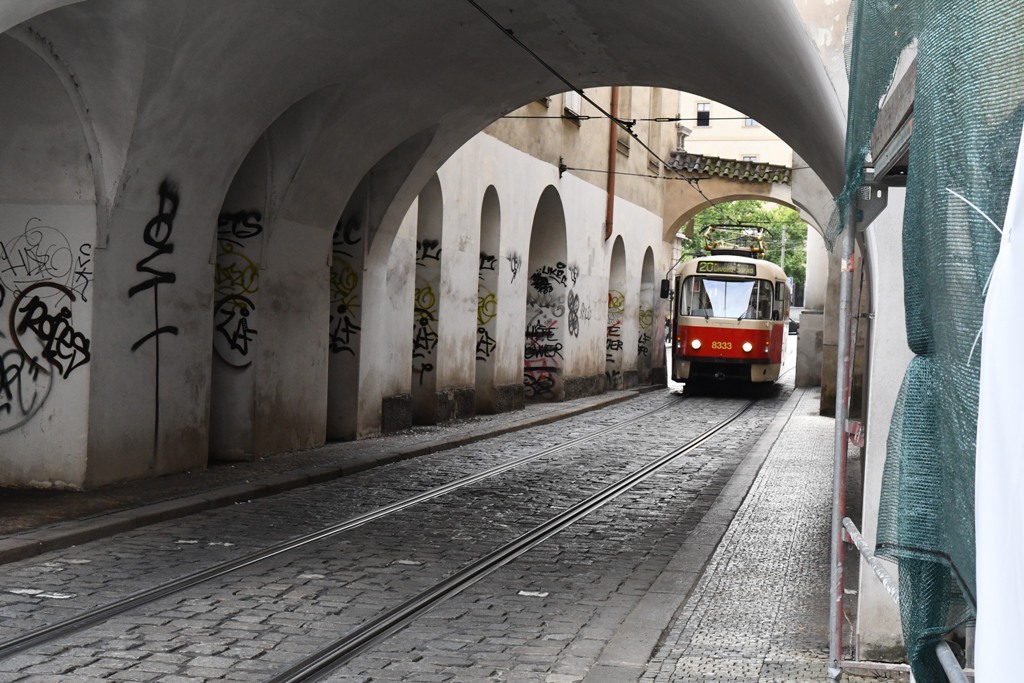
Tram just went by...how do I know...it left it's tracks lol
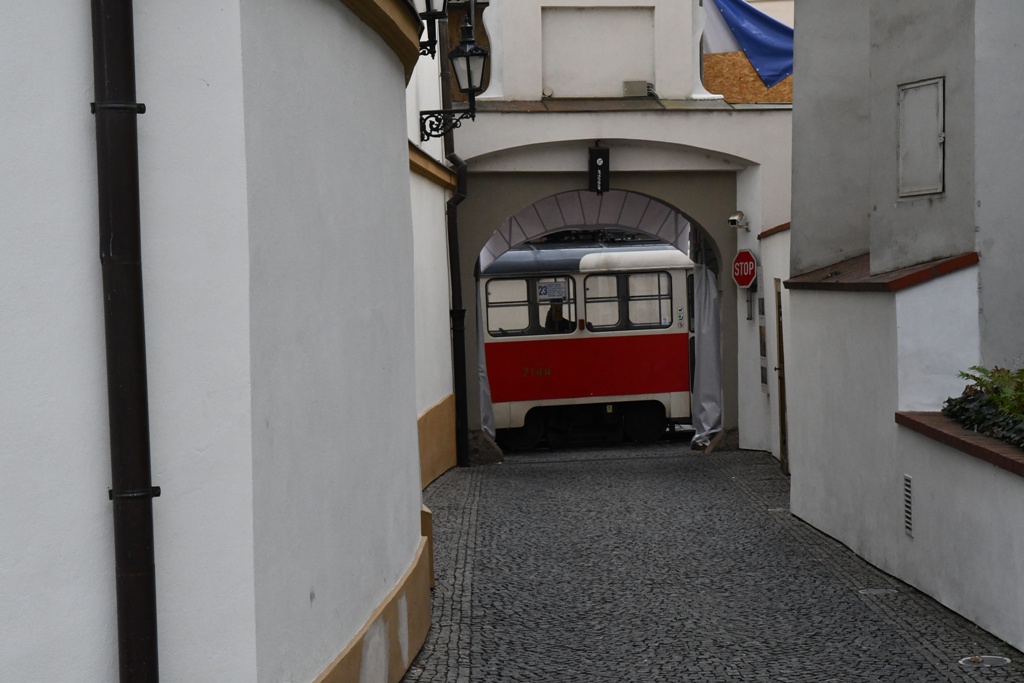
Once inside, it is a great place and I wouldn't want to have stayed anywhere else!!
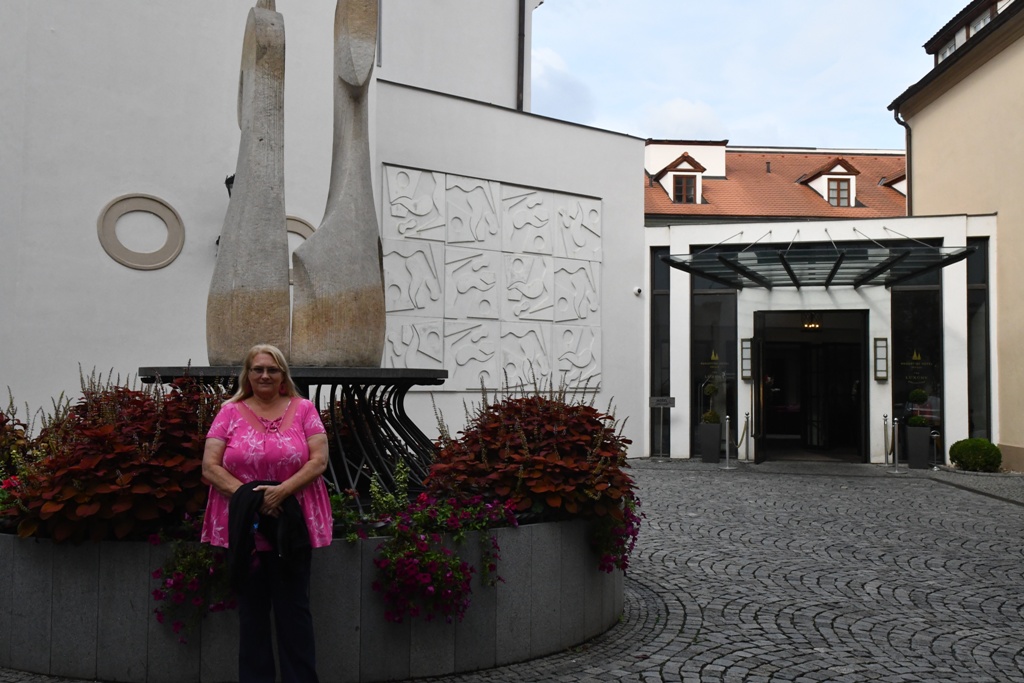
Time for Lunch
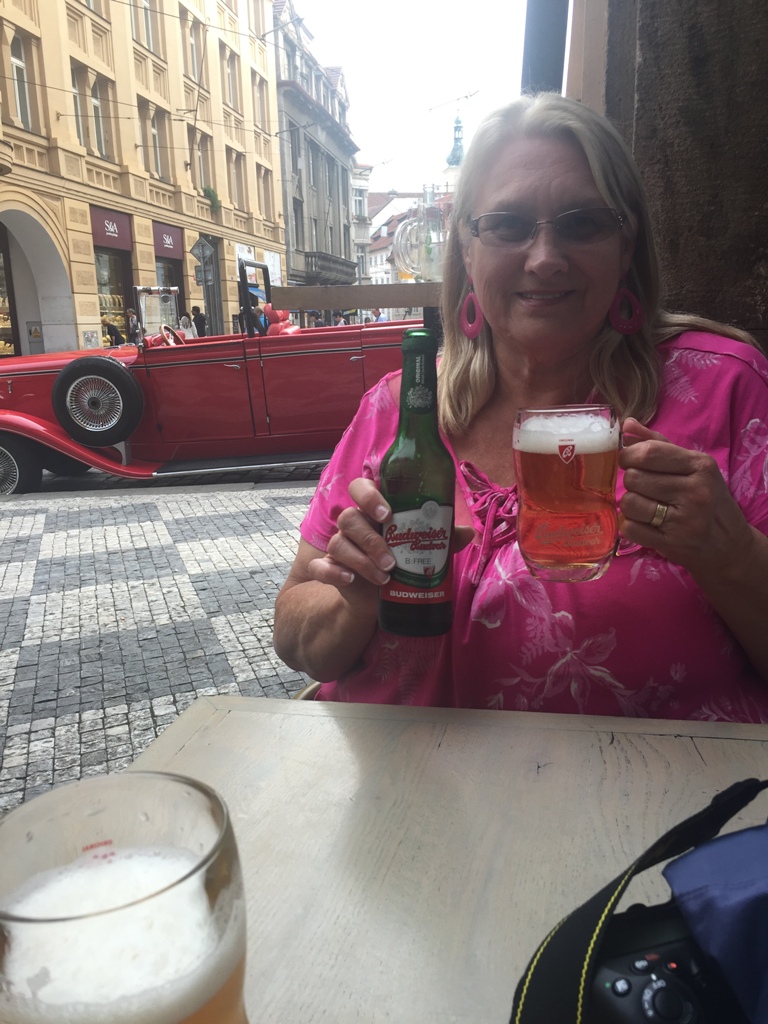
If you always see Sharon and I drinking beer, let it be known: water costs twice as much as beer!!!

We headed back to the hotel for a drink before out evening tour. We could not decide what kind of beer, so the waiter brought each of us two samples. I liked the darker one the best which happens to be only sold at the hotel and at the St Augustine monastery. It is a great beer and does not taste as dark as it looks.
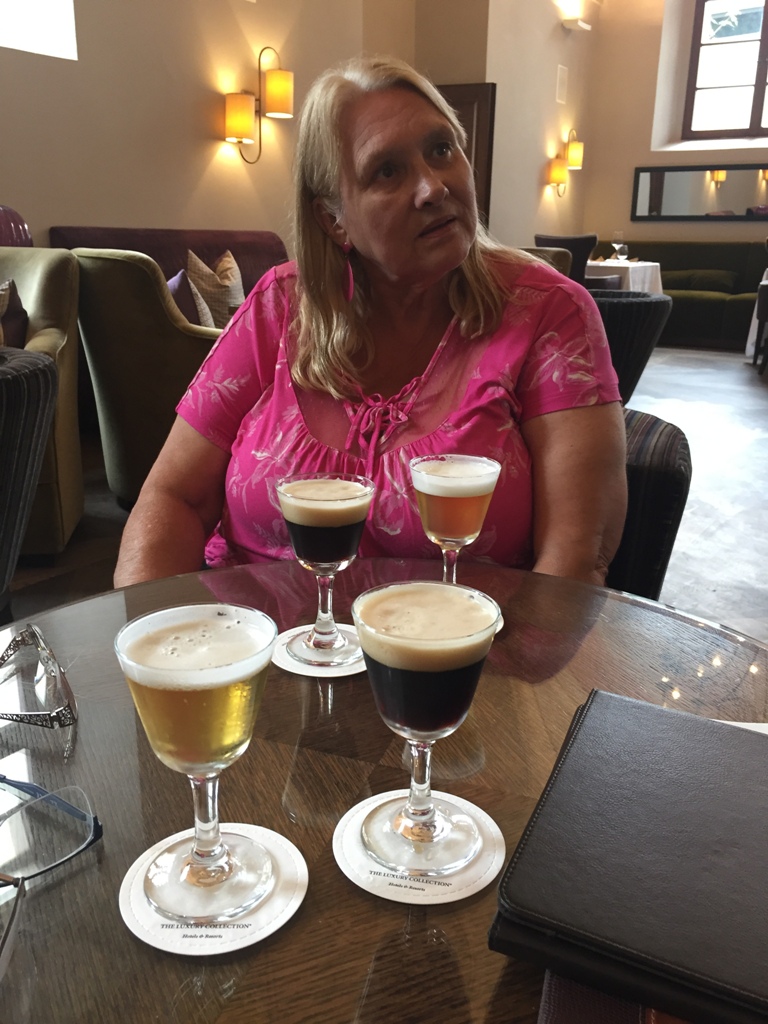
So this must have been later...
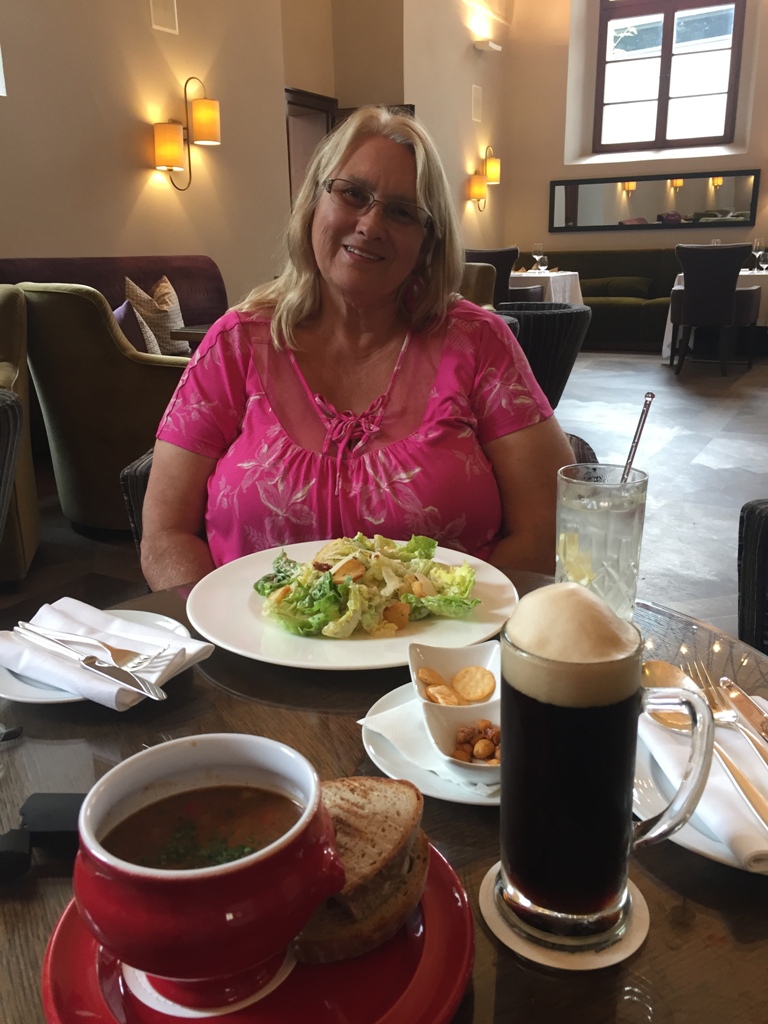
Much later ;)
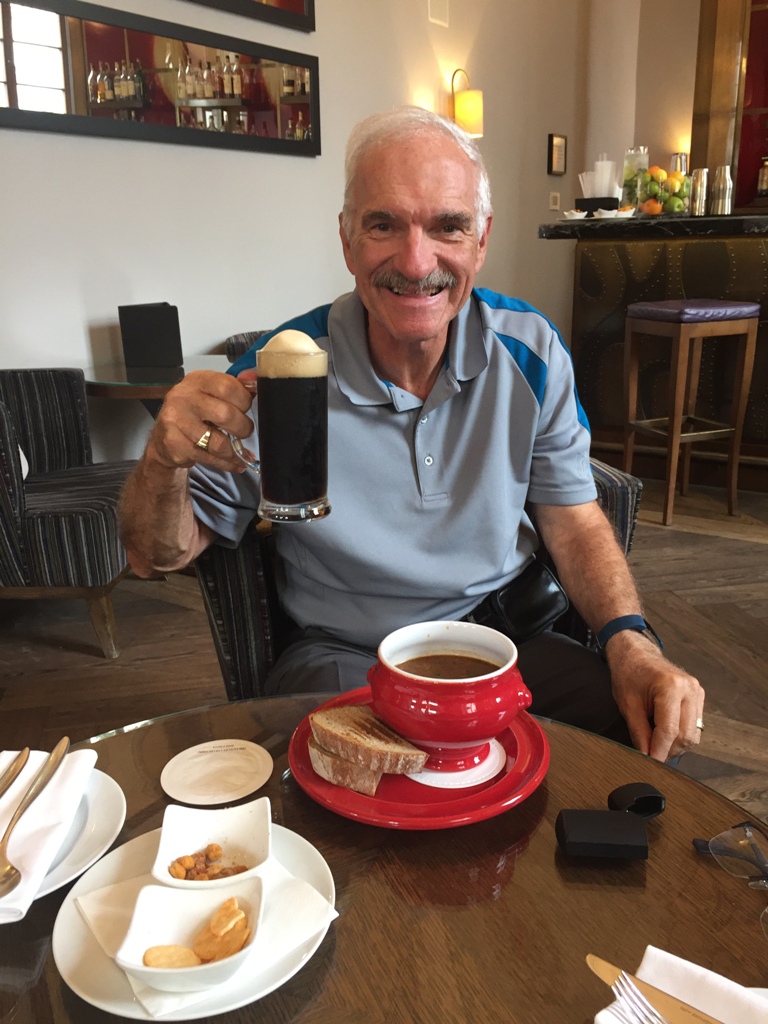
Once voted one of the ugliest buildings in the world, the building formerly known as the Žižkov TV Tower (now the Tower Park Prague) is actually an entertaining complex for those who like a view. There’s a café, restaurant and viewing platform offering 360 degree views of Prague as well as a garden restaurant with lots of green space underneath. At 216 meters, it is not only the tallest building in Prague, but also the tallest tower and the highest viewing platform in the Czech Republic. It was built between 1985 and 1992.
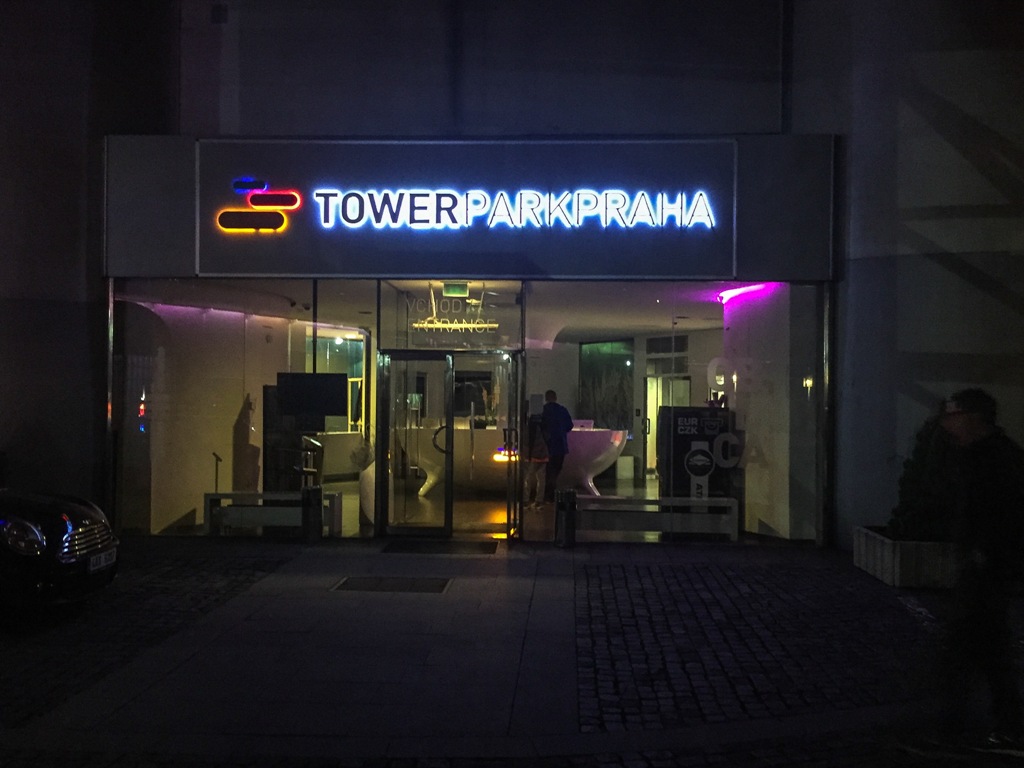
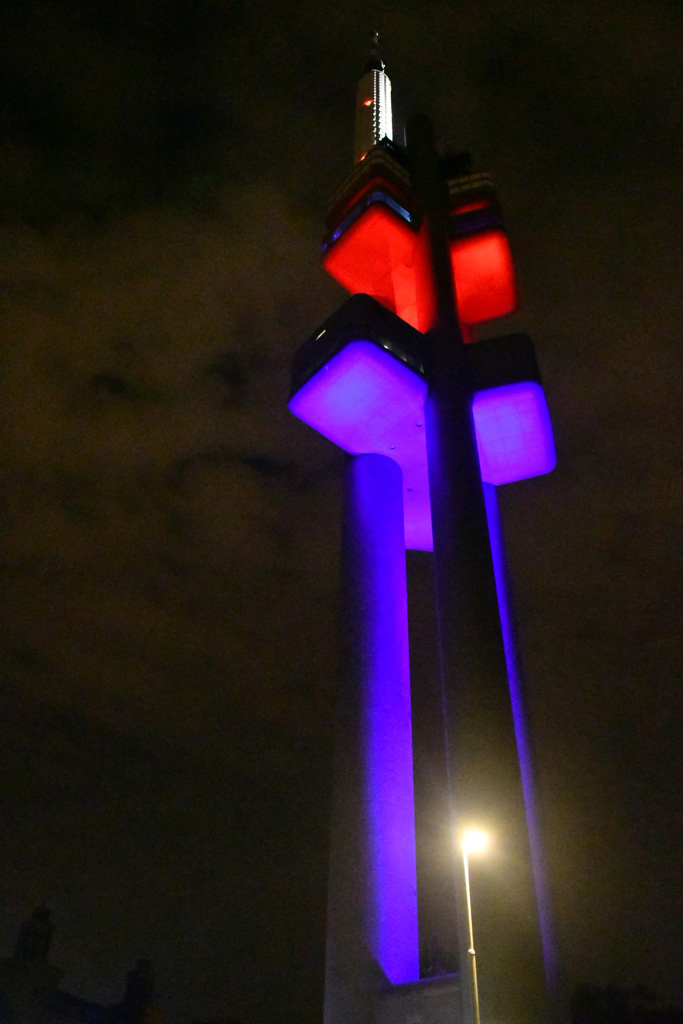

Time is 12:30...follow the heart
Back to Passage to Eastern Europe click here






